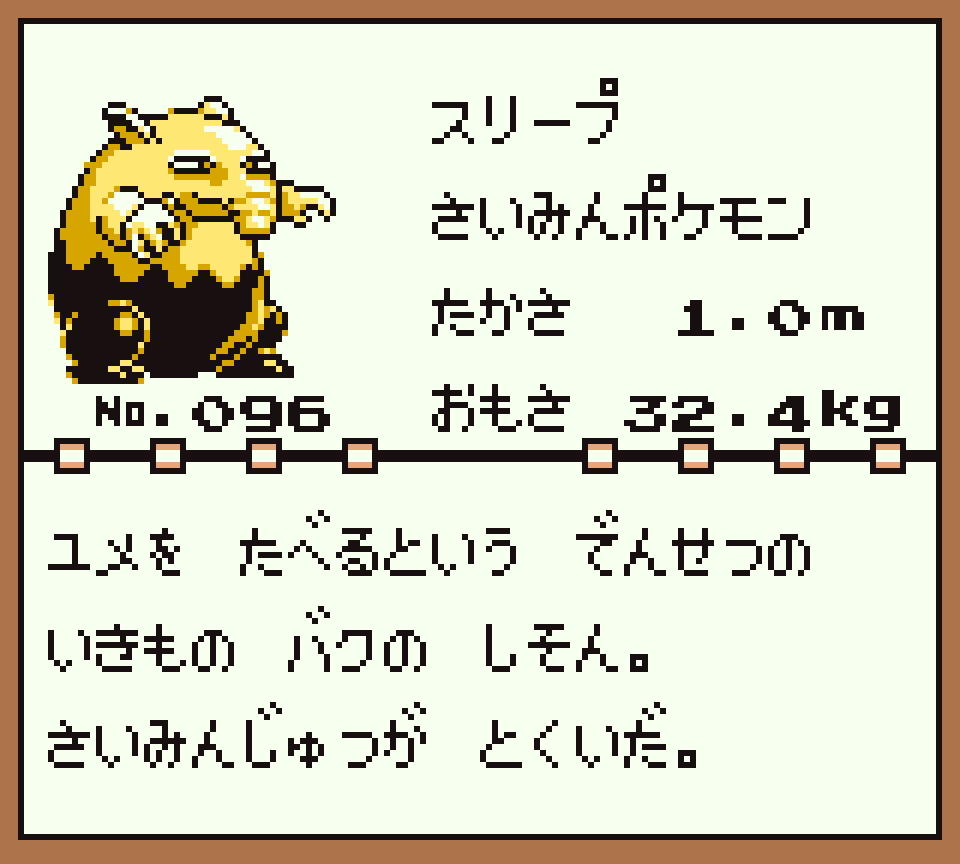
Sometimes these name changes don’t stay consistent, though, especially in long-running series. So I thought I’d start a list here of localized game names that changed or reverted later on for whatever reason.
The following list isn’t complete – in fact, I expect it’ll keep growing over time. So if you can think of any other examples, let me know in the comments!
Aeris / Aerith
This is probably one of the most famous examples out there:
In Final Fantasy VII, one of the main characters is known in Japanese as エアリス (earisu). This was translated into English as “Aeris”, which sounds relatively close to the Japanese name when pronounced out loud.
However, I’ve heard that the Japanese name was meant to be a reference to the term “Earth”, which makes some sense in the context of the game. In addition, the Japanese language doesn’t have a “th” sound, so an “s” sound is usually used in its place when necessary. With this in mind, one pseudo-pronunciation/transcription of エアリス would be earith.
The original “Aeris” translators probably weren’t aware of this “Earth” connection and were thrown off by the s/th issue. But when later Final Fantasy VII-related games and media were released, the translators took these things into account. And so she’s been known as “Aerith” ever since.
Dr. Light / Dr. Right / Dr. Wright
In the Japanese Rockman games, the benevolent inventor is known as ライト博士. The problem is that there’s no clear distinction between L and R in Japanese, so this name could be written in English in many different ways, such as:
- Dr. Right
- Dr. Light
- Dr. Wright
All three are valid spellings, but without inside knowledge, how would you know which one is the correct, intended spelling?
This confusion is why the character has gone by all three names throughout the English Mega Man games:
The name has bounced around from one to another over the years, but it seems to have settled on “Dr. Light” in English now:
But, as we can see above, the confusion still lives: it appears “Dr. Right” is the preferred spelling in Japan. Maybe? I dunno.
Gannon / Ganon
In Japanese, the main villain of the Zelda series is named ガノン (ganon). Whenever the name was written out in English in the early Japanese games, it was spelled “Gannon” for whatever reason.
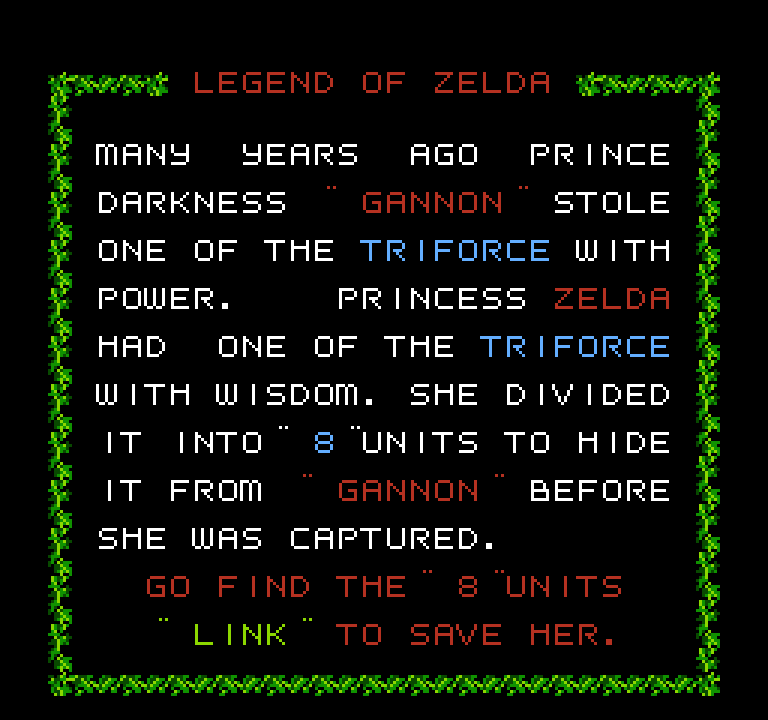
Because of this Japanese precedent, the “Gannon” spelling was used in the first English Zelda game too. But after that, it was spelled “Ganon”, even when the Japanese games used “Gannon”.
In short, this is sort of the reverse of the other examples in this list: a pre-established name was “fixed” after its first localized release, while the established name remained in use in the original Japanese games.
Molblin / Moblin
One of the iconic enemies in the Zelda series is called the モリブリン (moriburin), a combination of the words mori (“forest”) and goburin (“goblin”). The Japanese manual for the first Zelda spelled this in English as “Molblin”, and this English spelling was used in almost all of the official games and merchandise released outside of Japan.

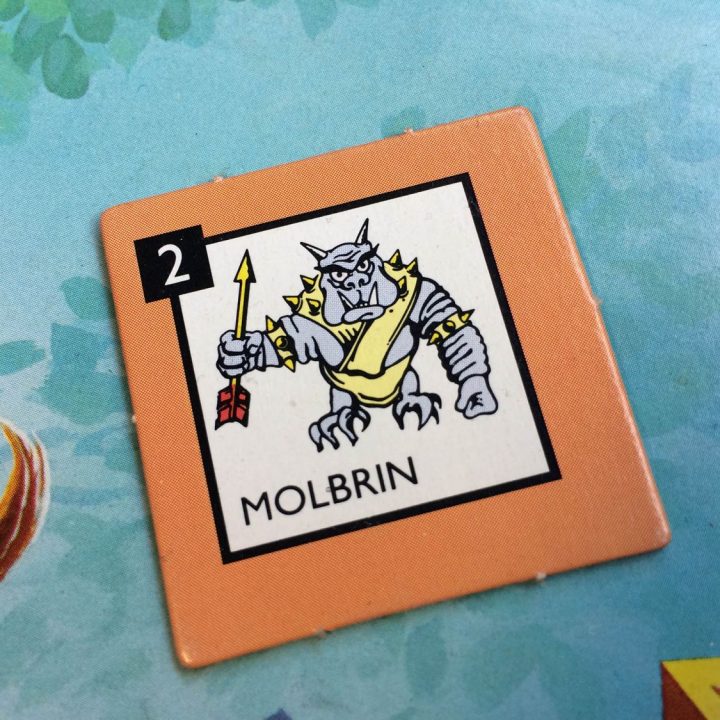
But at some point, for some reason, the name became standardized as “Moblin” in later English games and English materials.
This enemy’s English name has been “Moblin” since the third game’s release, as far as I know. I don’t know if it’s also replaced the “Molblin” spelling used in Japanese materials, though.
Pokey / Porky
In MOTHER 2, the Japanese version of EarthBound, the main character’s rival is known as ポーキー (pōkī). However, because the Japanese language has trouble dealing with English “vowel + R” sounds, the character’s Japanese name could be written in English in several different ways. But the translators could only choose one and hope it was right.
In EarthBound, this character’s name was translated as “Pokey”, which is relatively close to the pronunciation of the Japanese name. No one really thought much about Pokey’s name until a decade later, when MOTHER 3 was released in Japan. It quickly became clear that ポーキー (pōkī) was intended to be spelled “Porky”.
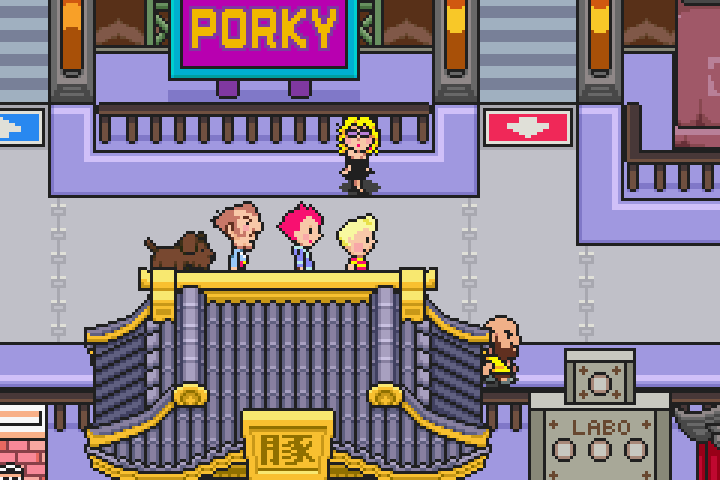
Once this intended spelling was finally made clear, “Pokey” became “Porky” in every EarthBound-related game released afterward.
Just as there were “Aeris vs. Aerith” fan arguments back in the day, EarthBound fans have had plenty of arguments about “Pokey vs. Porky” too. Some fans even use the two names as a way to indicate which game they’re talking about, with “Pokey” referring to his early self and “Porky” as his later self.
Princess Toadstool / Princess Peach
In the Japanese version of the original Super Mario Bros., Princess Peach is the princess of the Mushroom Kingdom. When the game was localized into English, she was renamed Princess Toadstool to fall in line with the game’s mushroom theme.
Years later, Nintendo decided to revert the name back to Princess Peach:
This makes me wonder how the name was handled in other languages too. Here’s what a bunch of the names for the princess were in other regions:
Did the princess’s name undergo even more changes in other languages before Super Mario 64? Or did some regions switch to “Peach” earlier or later? Let me know in the comments!
Ultros / Orthros
This tenacious but incompetent villain first appeared in Final Fantasy VI. In Japanese, his name is オルトロス (orutorosu), which is what we know in English as Orthrus/Orthros, the brother of Cerberus in Greek mythology.
Mythological names are spelled and pronounced differently in Japanese and in English, so the English translator didn’t make the connection at the time. Instead, the enemy was named “Ultros”, which is an understandable attempt at converting the Japanese name into English.
The enemy became a fan favorite and appeared in many other Final Fantasy-related games since. But, thanks to the Internet and improved communications, later translators realized the mistake and decided to change Ultros’ name back to “Orthros”. There’s been some pushback from fans attached to the Ultros name, though, so there’s been a constant back-and-forth between the two names ever since:
The handling of this specific name has been so messy and inconsistent that I feel it almost deserves its own article that would need regular updates.
Zola / Zora
Another common enemy in the Zelda series is known in Japanese as the ゾーラ (zōra). Because L and R are sort of interchangeable in Japanese, the name was given the English spelling “Zola” in the Japanese manual.
This Zola name was used in the first two English Zelda games and in all other related merchandise and media.
Starting with the third game, however, the name has been spelled “Zora” instead:
This is another unusual case, though – the Japanese version of the third game also spells it as “Zora”. So how and why did this name change? Did someone on the Japanese side simply make an inconsistent L/R swap, as is so common? Or did someone on the English side suggest the change? I’d love to learn the reason behind the new name.
Even More Examples
The above examples are just ones that I could easily remember off the top of my head, but I’m sure there are many, many more. I’d like update the list with new examples from time to time, so if you know of any other localized names that got changed or fixed later on, let me know!


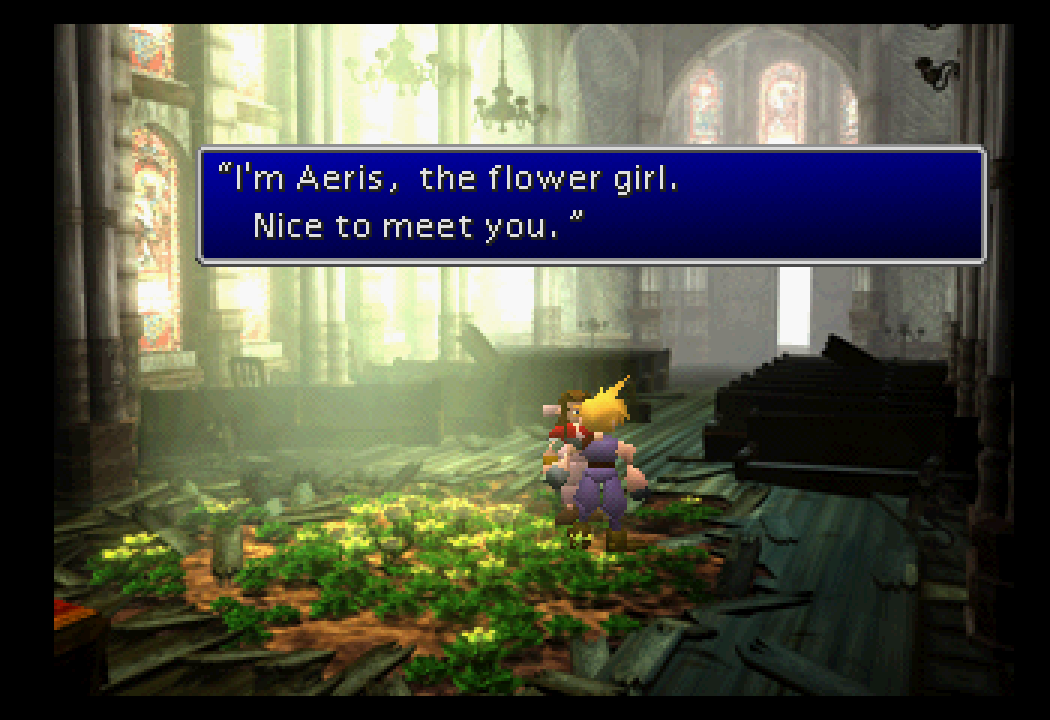
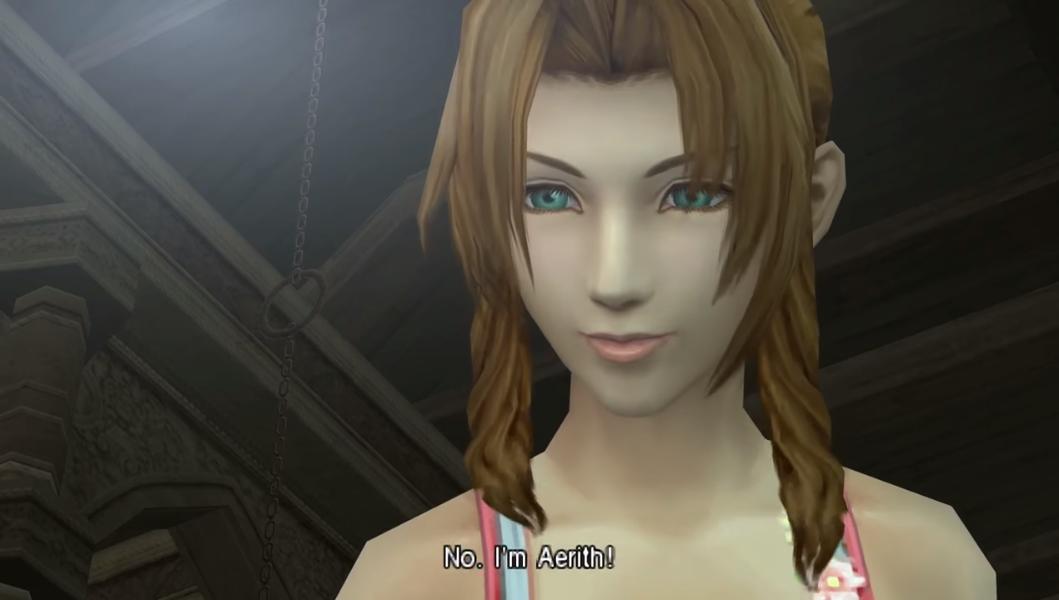
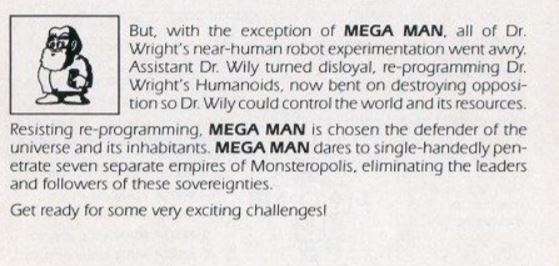
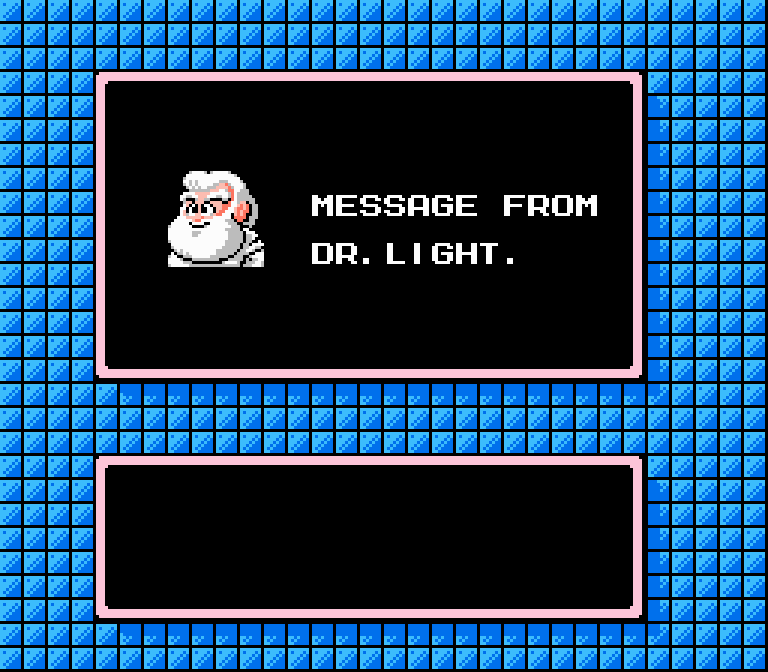
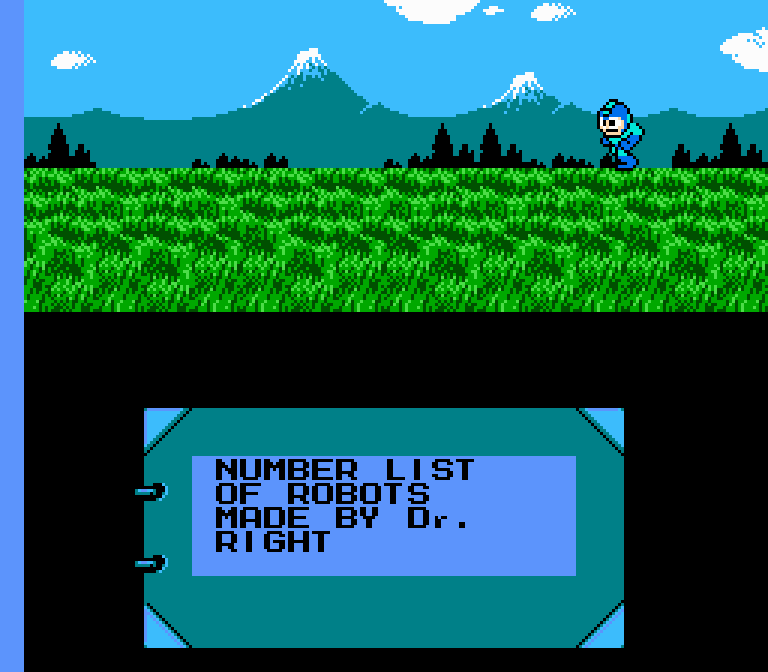
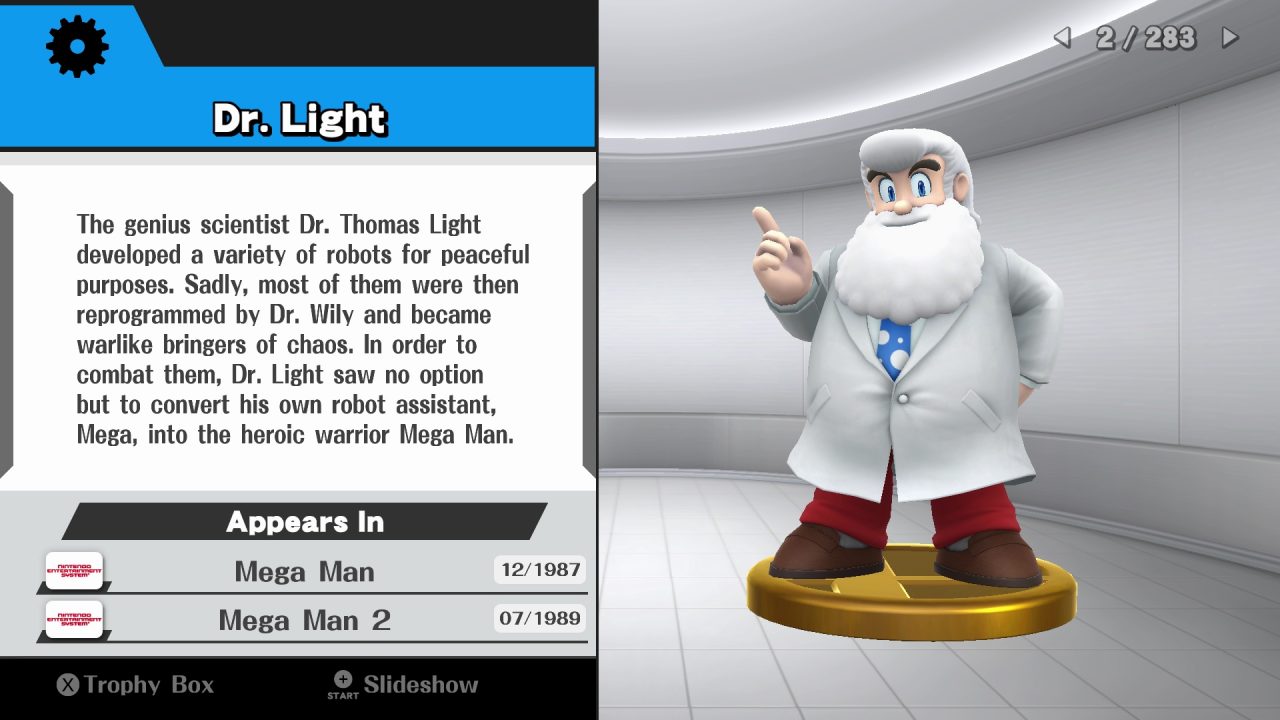
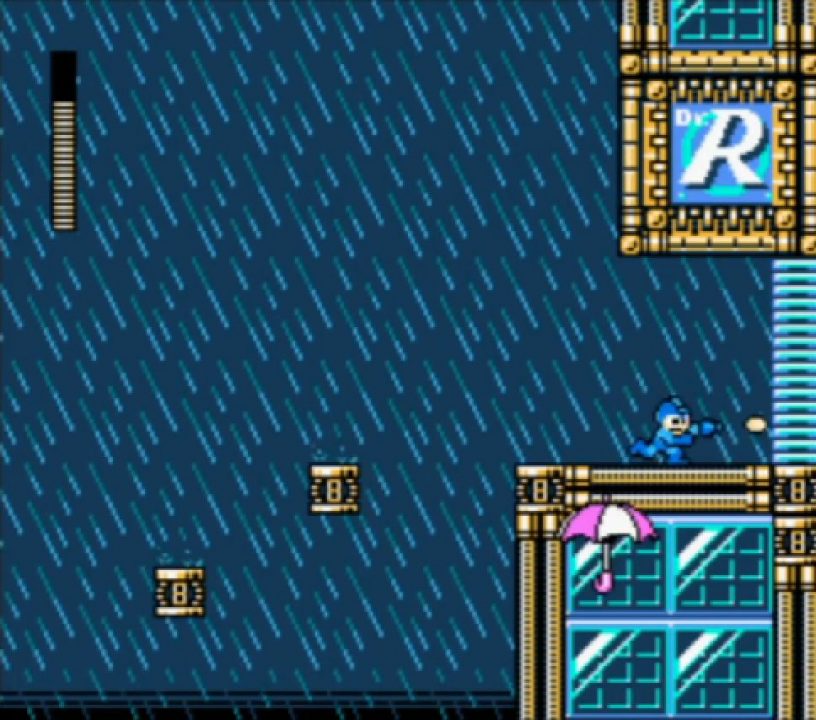
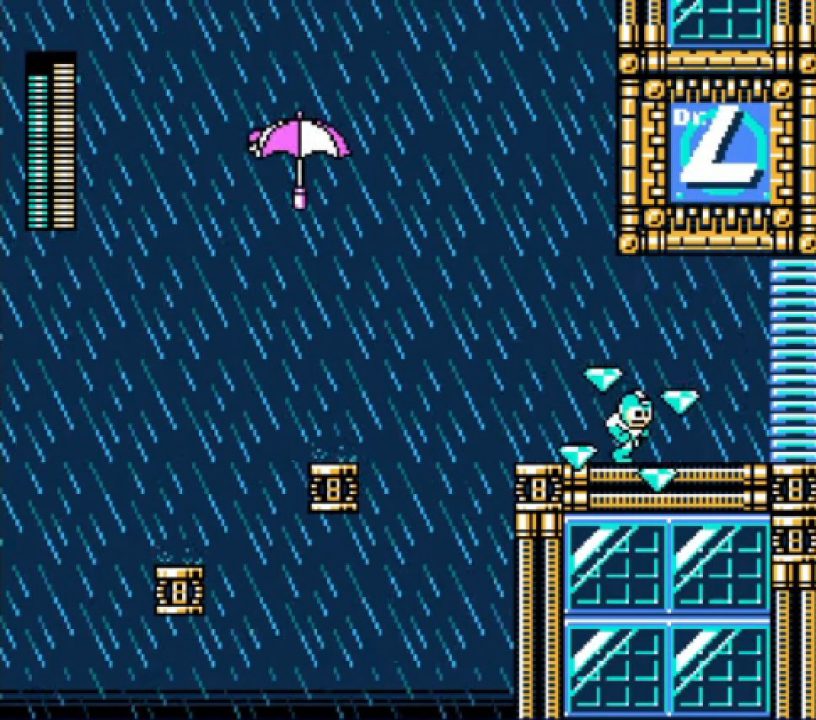


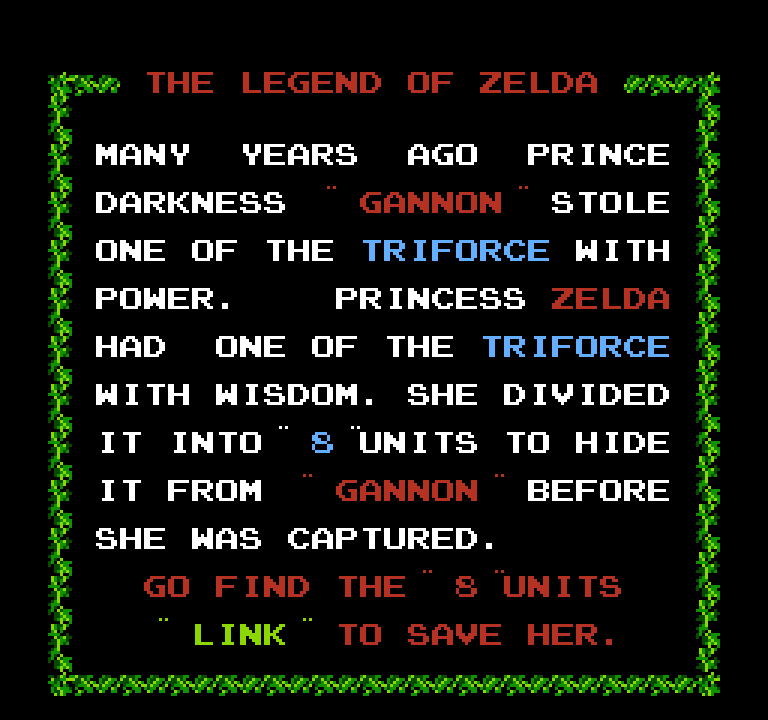
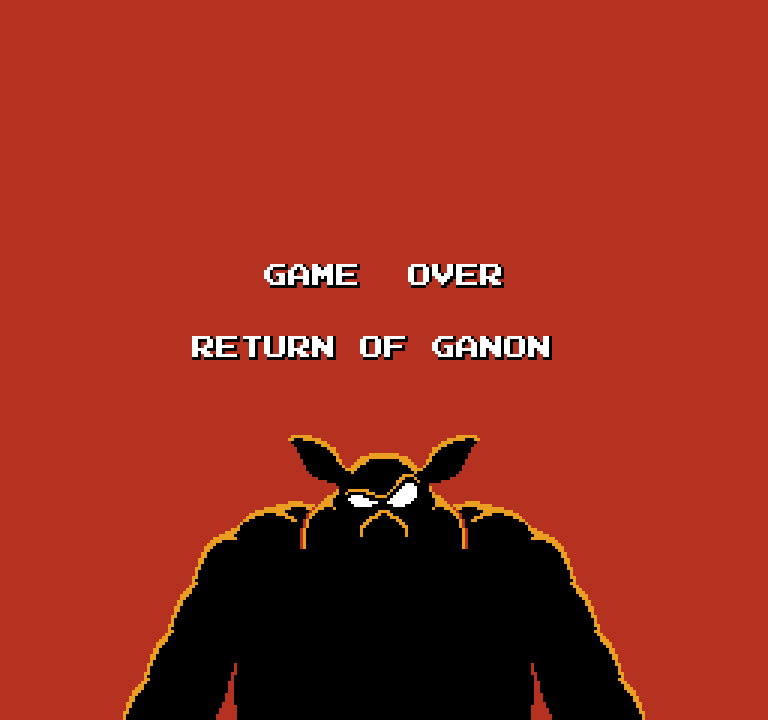
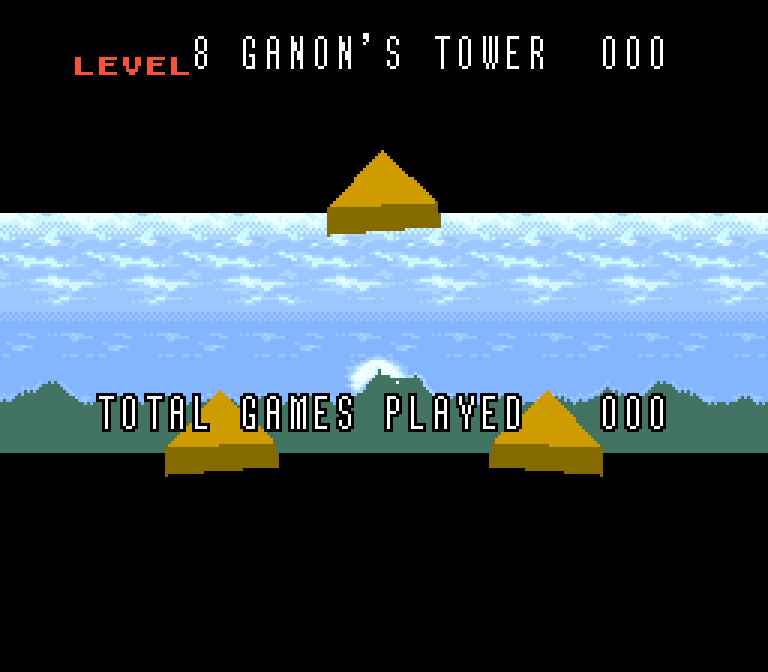

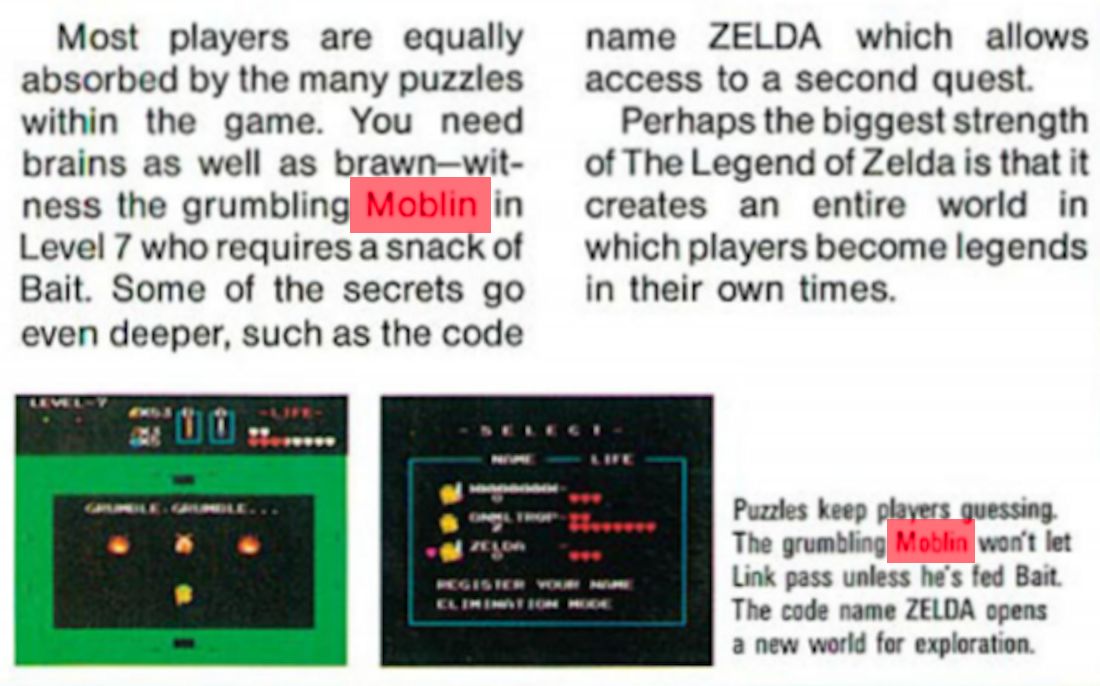
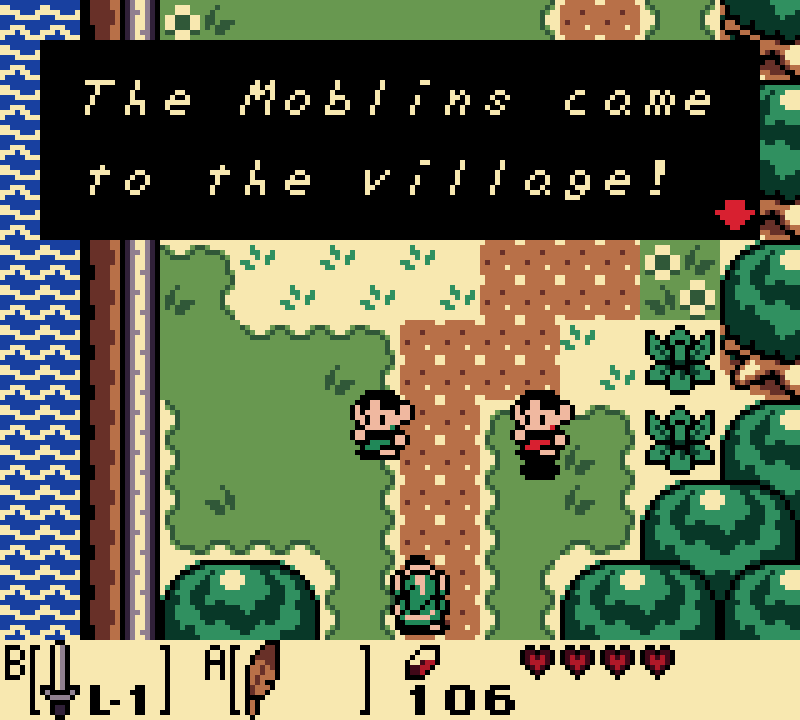
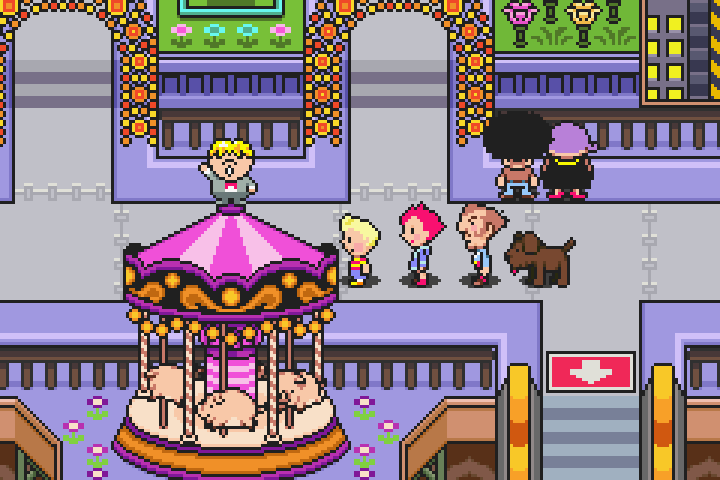
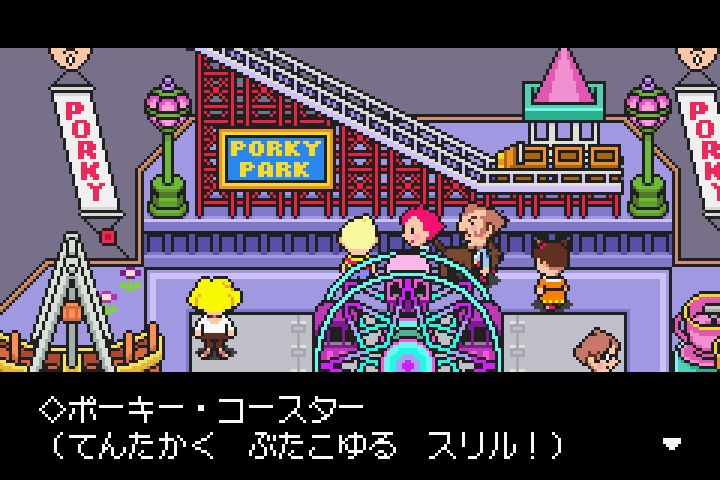
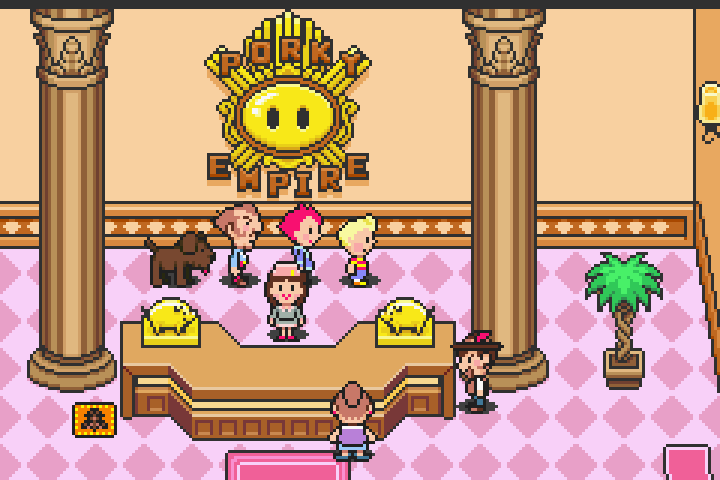
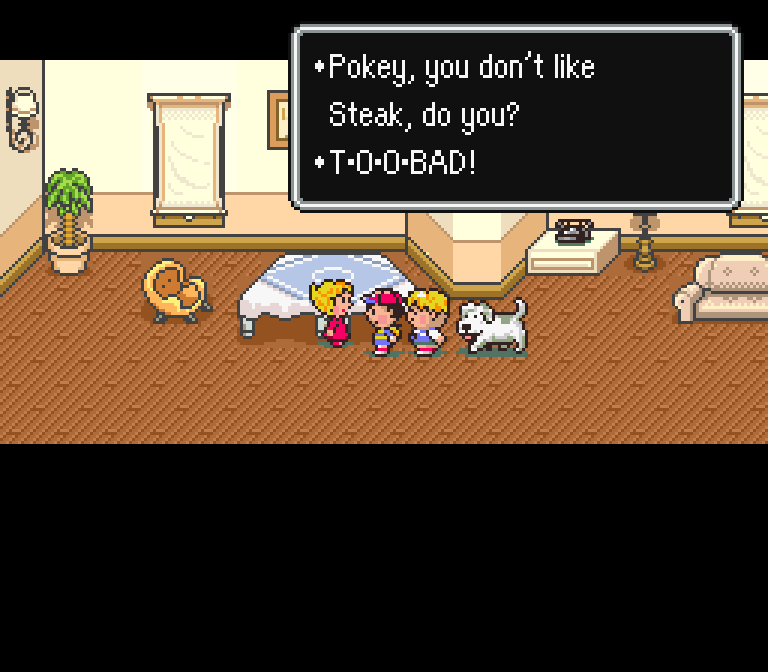
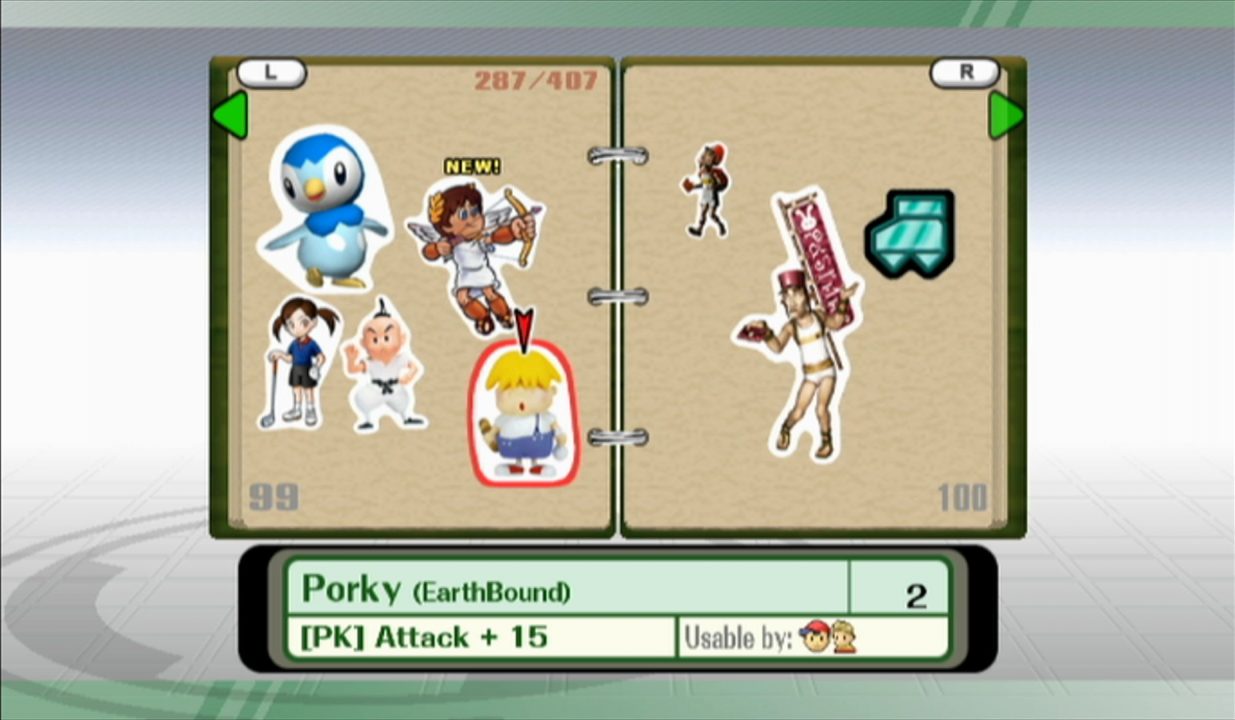

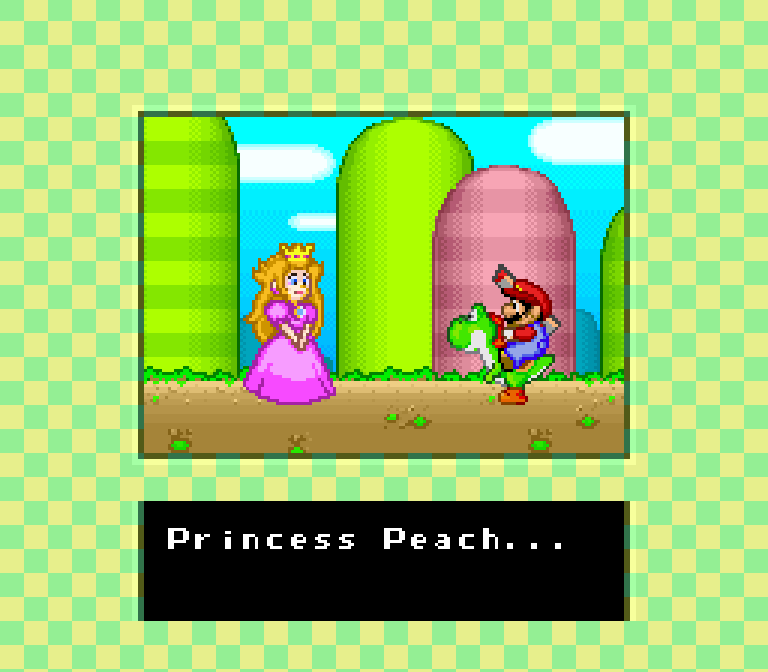
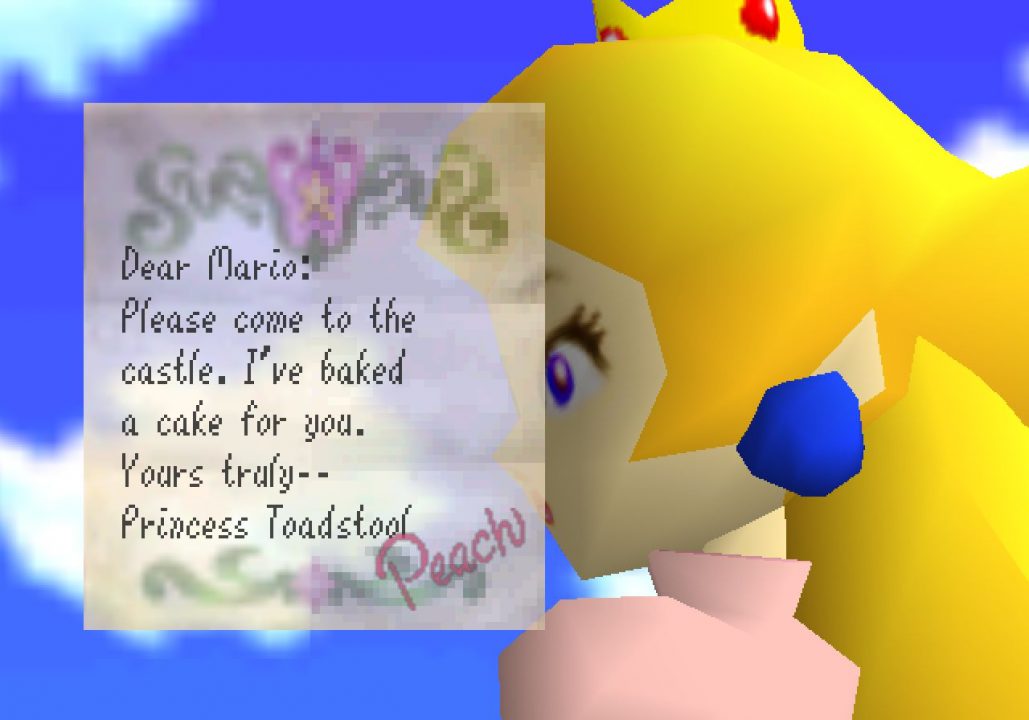
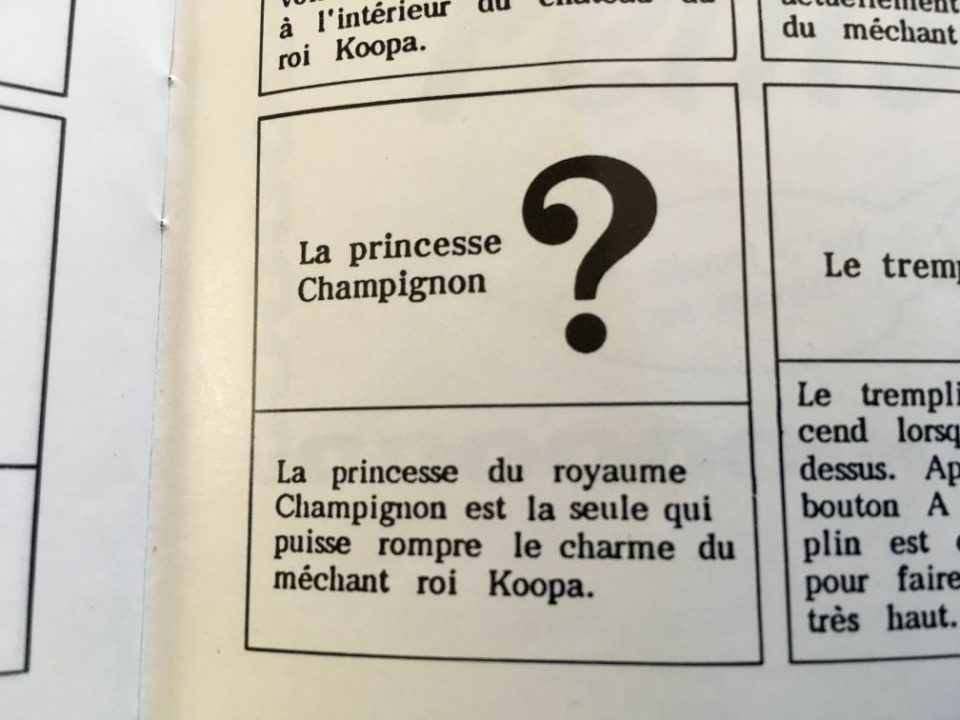
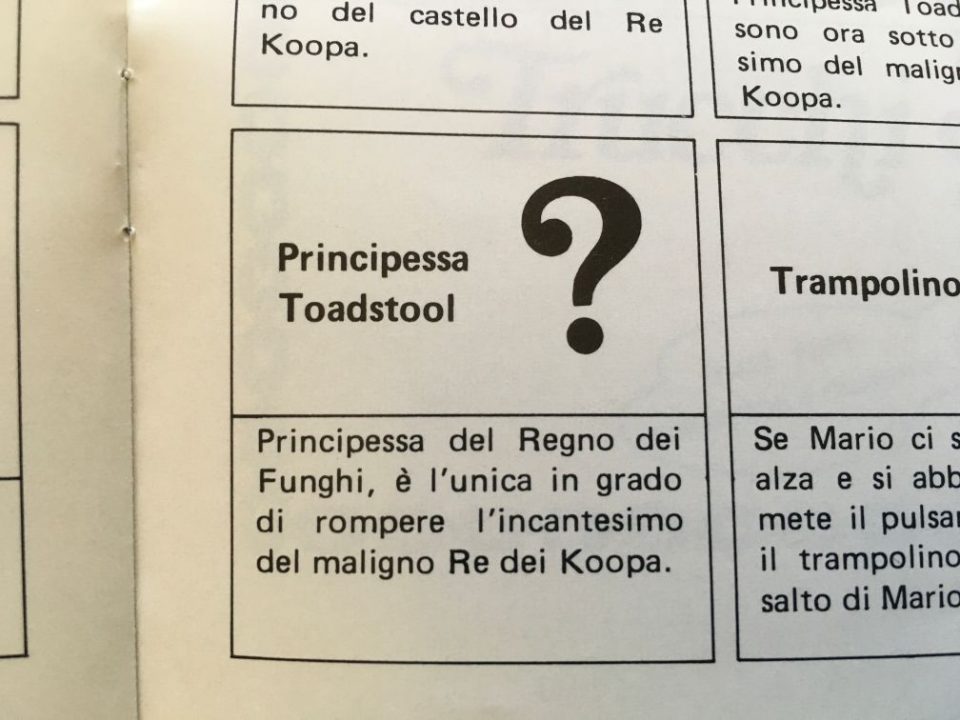
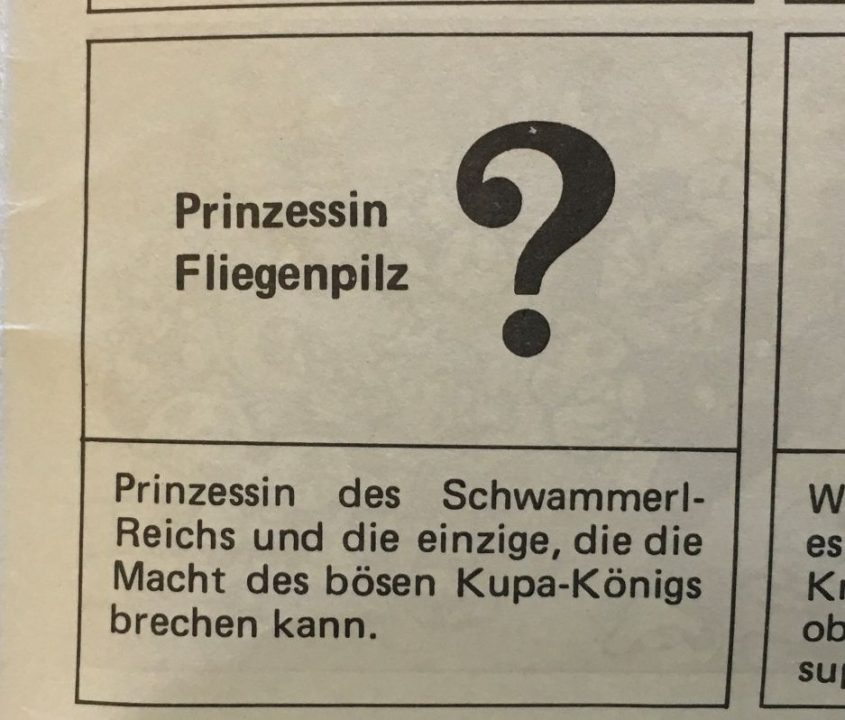
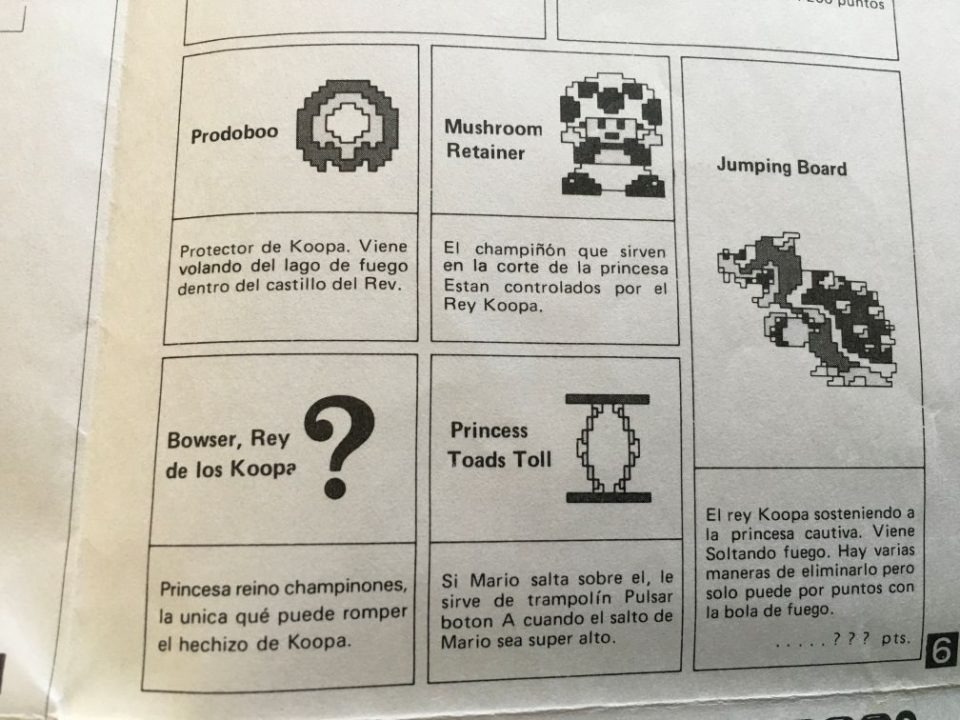
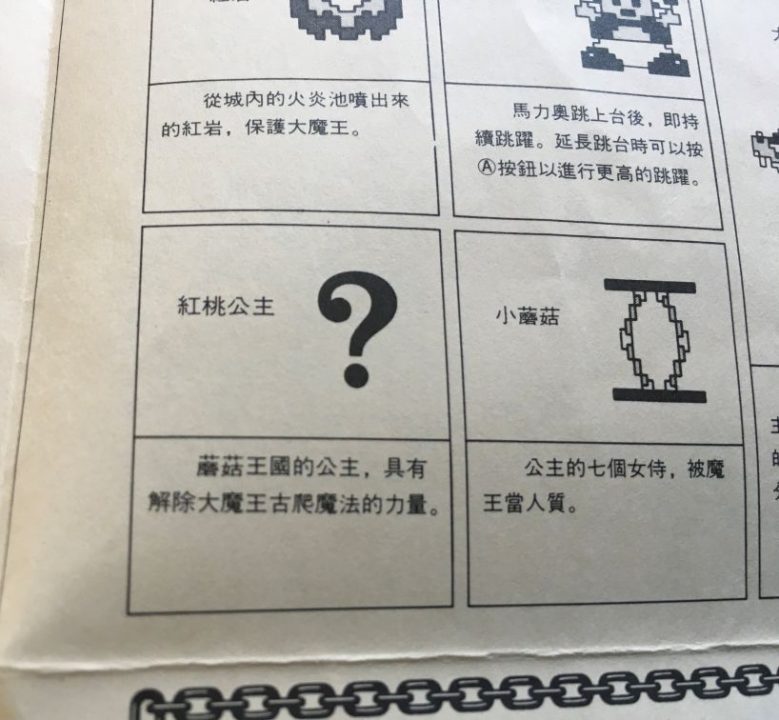
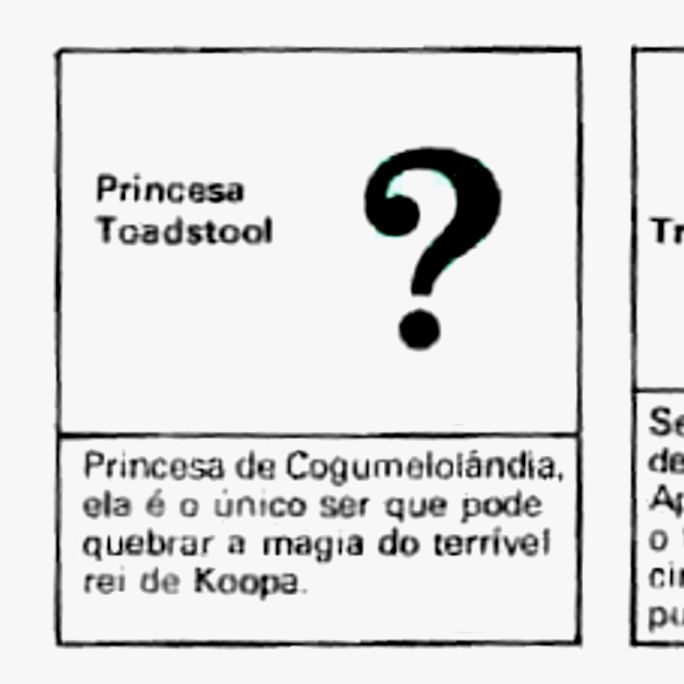
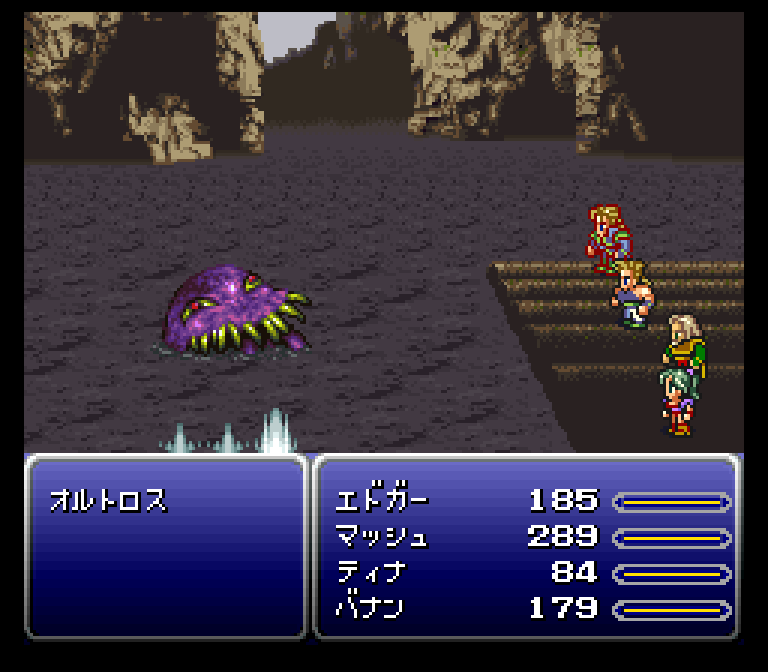






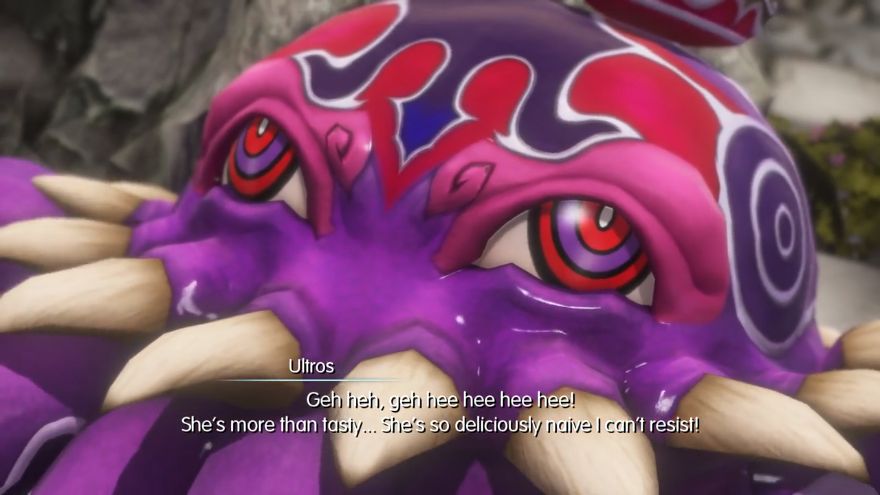
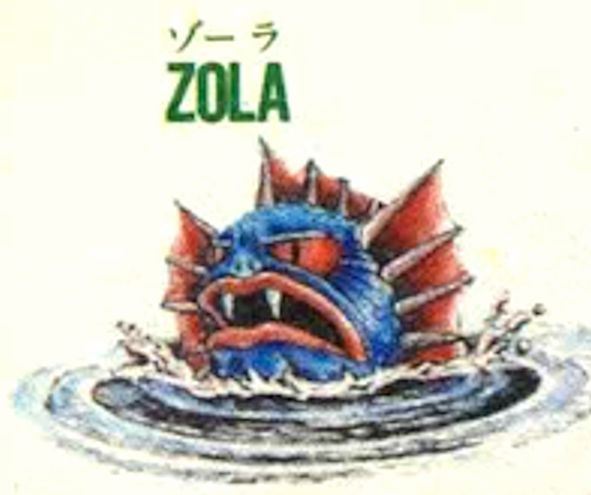
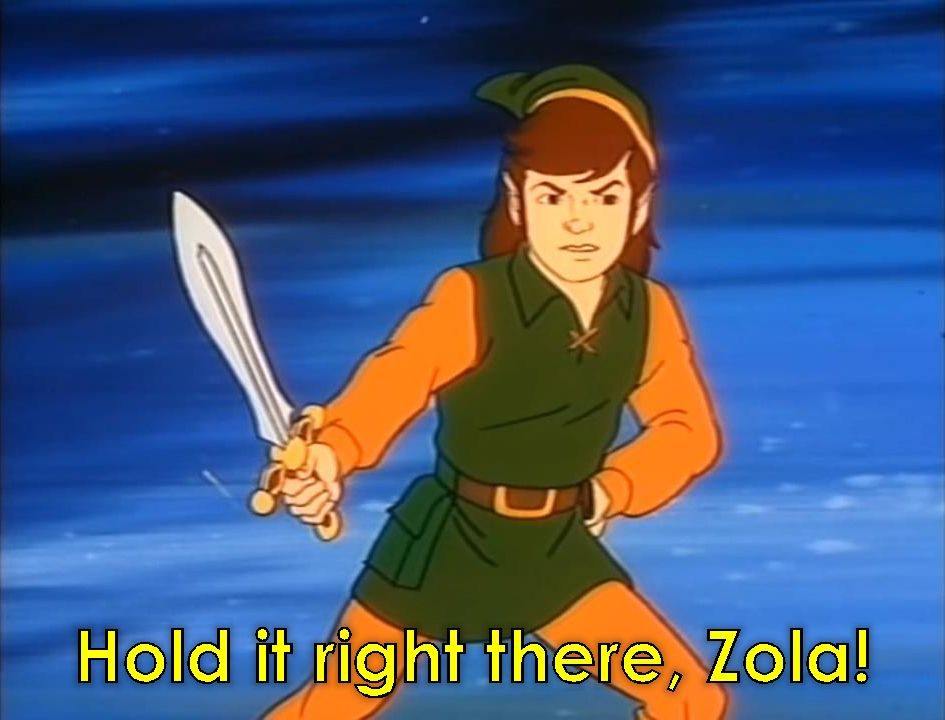
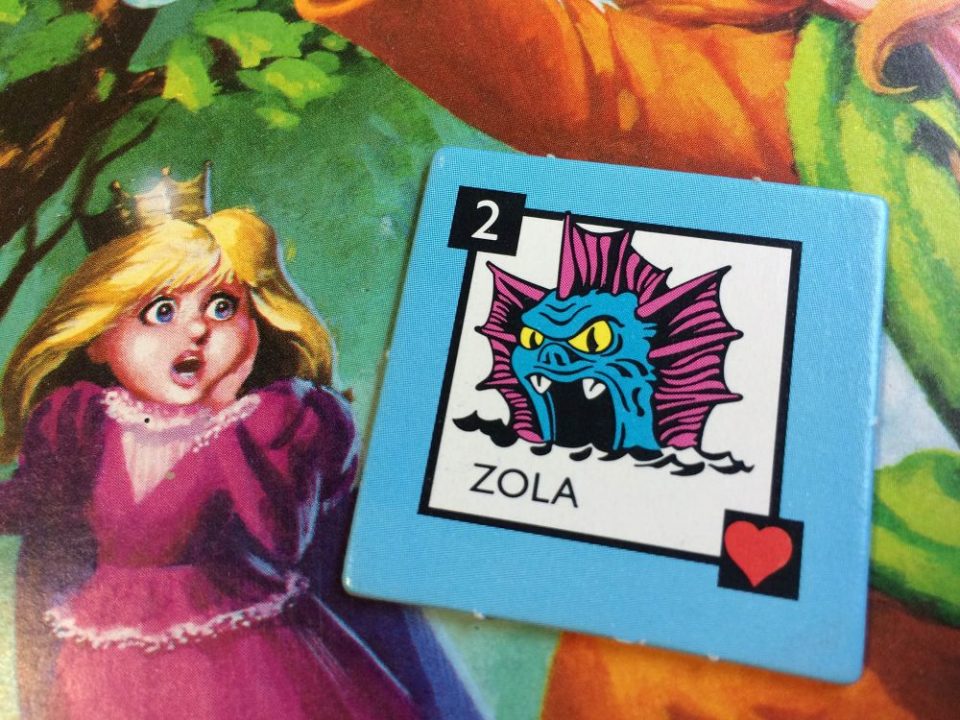
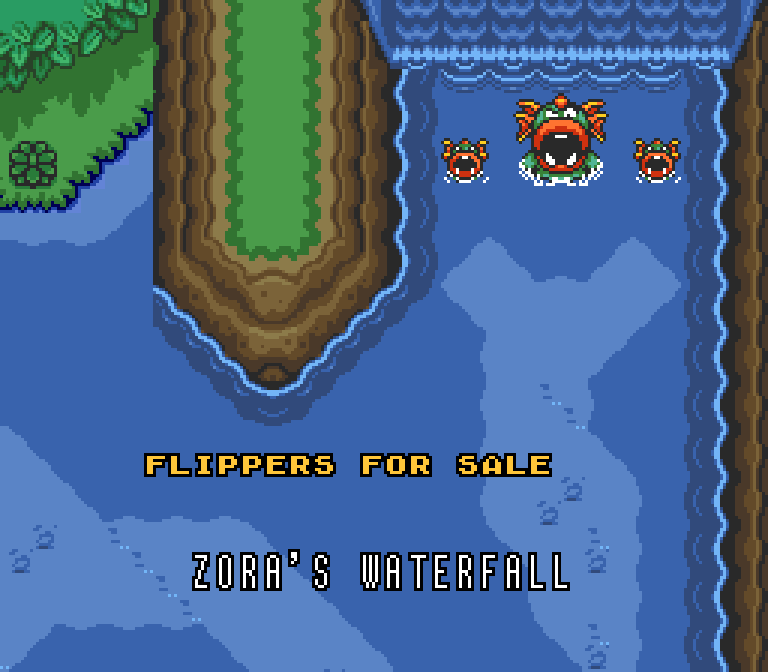
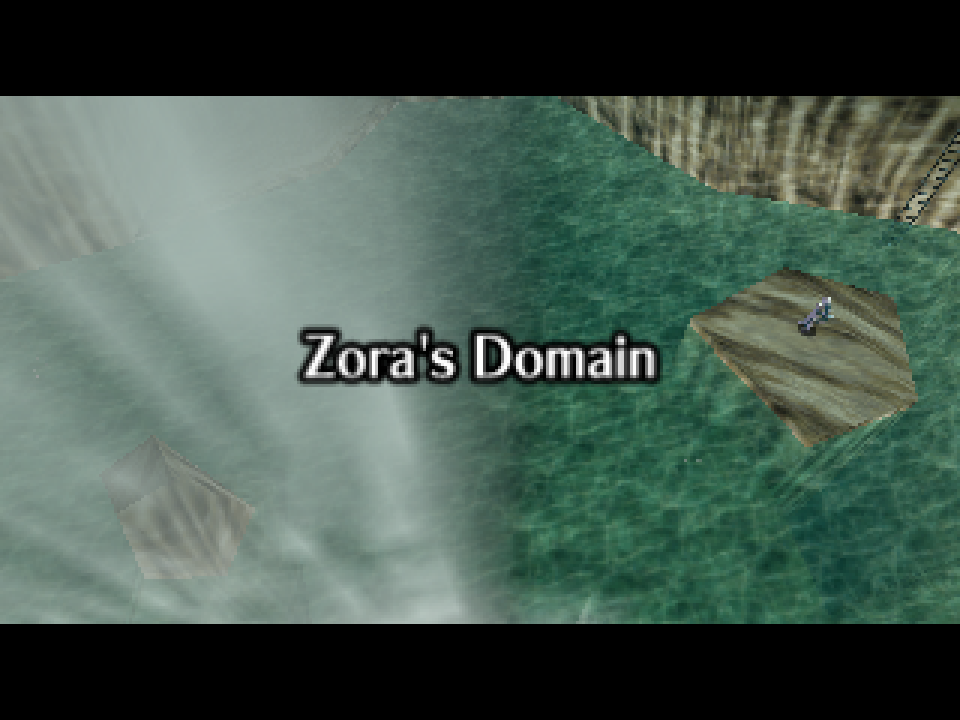
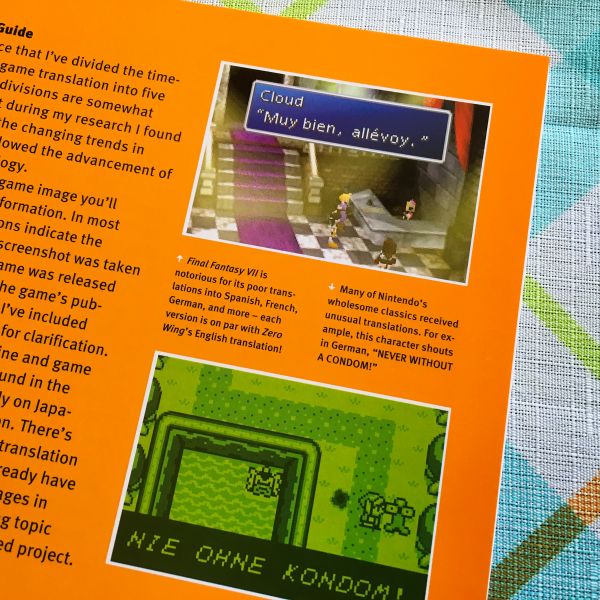
People were angry about “Aeris” before the game even came out.
I remember not being confused with Princess Peach in Mario 64 and having a feeling of consolidation/reconciliation. The Japanese name must have been somewhat common knowledge by then.
Due to a different translation team handling every entry, it took me a long time to realize much of the common heritage of Final Fantasy games due to judicious, inconsistent renaming. To this day they still haven’t nailed down what to do with -ra and -aga spells. After mostly standardizing on leaving them as-is around Final Fantasy VIII, they went with II and III in Final Fantasy XIV.
Doesn’t Magus sort of relate to this? My understanding is that the original Japanese script gave him Maou, which is eventually suggested to be more of a title, but the original translation made it sound like it was his name since “Magus” is a much more uncommon term in English than Maou is in Japanese. Then a later retranslation split the difference and had him have Magus as a name he takes on while Fiendlord is more obviously a title.
It’s not really a localization issue, but I’m also reminded of a wacky incident in the Yu-Gi-Oh manga. Supposedly they introduced a monster card named Dark Necrophilia. Maybe they thought it sounded like a feminine name since it’s a feminine monster. At any rate, by the next week they changed the name to Dark Necrofear.
Mato did an article on the whole mao thing and magus is mentioned there: https://legendsoflocalization.com/tricky-translations-1-maou-daimaou/
Yu-gi-oh is a different case, dark Necrofear most likely got changed because of a reference to death. Yu-gi-oh has a lot of references to death that got renamed to Des. Cards like “des dendle”, “des wombat”, “des frog”, etc. There’s also a whole other slew of changes in yu-gi-oh cards to make it more kid friendly, like changing demons to fiends, altering the appearance of guns, covering up cleavage.
That’s not what happened here. “Dark Necrophilia” was meant to be the original Japanese name, in the manga. The author decided to change it to “Necrofear” for obvious reasons.
Magus is a yes and a no. Slattery overused Fiendlord a lot, and when you look at scripts he actually re-wrote Magus’s personality a good bit. As a title, it’s not really used a lot. At least from what I’m reading of the old translation script, it’s used like twice. Once in the SNES translation it’s used when the legend of Cyrus comes up after the sidequest to power up the Masamune.
Oh, Eggman’s another extremely well known one.
Does Trails in the Sky count? XSeed called one character Zane for a while, but decided Zin more closely matched upon release of The 3rd, so they changed it and patched the earlier games to use the changed name.
(Original PS1) FF7 fun fact: If you manage to skip Aeris’s name entry, when she joins your party, she’ll be named Aerith.
Note: I don’t remember how I managed it, but I was screwing around with a Gameshark when I found it.
There’s at least one other variant findable via the debug rooms (Earith? Earisu? I forget).
Of course, the real litmus test is whether you say Leno, Zeng and Yrena.
Just to point out… I think your screenshot of the “official English guide for the third Zelda game” is actually the first Zelda game. And is that Nintendo Power? That panel looks awfully familiar.
I have that book. It is indeed the guide for the third game. There’s a short segment at the beginning that recaps the first two games.
Funny how the Zelda III-guide consistently call the Goriya for a Moblin. But it’s easy to see the reason for their mistake, both are similar but slightly different kinds of goblins. Moblin-Overworld goblin, Goriya-Underworld goblin. Makes me wonder what the “riya” in the name Goriya comes from.
I think an early example of the Moblin spelling is Nintendo Power’s January/February ’89 Zelda II coverage.
I never liked “Aerith” because it feels like you are sticking your tongue out and blowing it. Aeripthhhhhhhhhh. Aeris sounds better, mistranslation or not.
Do you dislike saying “Earth” or “Sephiroth”?
Incidentally, I was introduced to FFVII through Kingdom Hearts, so I never liked “Aeris”.
Sephirotphphpphphph has a nice ring to it, especially to the One Winged Angel song.
I love Earsbound 2. The chapter with Tazumili Town is my favorite.
Not really cuz when you say it out loud those don’t have a high emphasis as Aerith does.
Yeah, it’s hard to explain why, but I agree. The ‘th’ in ‘Sephiroth’ doesn’t seem as harsh as the ‘th’ in Aerith, so when you say ‘Aerith’ it comes out a little lispy at the end because you naturally extend the ‘ith’ sound. It’s a name that doesn’t quite flow as well as “Sephiroth” does.
“Aeris” just sounds nicer, imo. More like a name.
There’s also the Street Fighter character Charlie, who was originally known as Nash in the Japanese version of the games. Non-canon sources such as the Udon comics created a compromise by giving the character the full name of “Charlie Nash,” and this solution was eventually adopted into at least one of the games.
https://streetfighter.fandom.com/wiki/Charlie_Nash
Street Fighter also has three characters who’s names were switched around during localization.
Mike Bison became Balrog
Balrog became Vega
Vega became M. Bison
There’s also Gouki, who became Akuma in the west.
And while we are on the subject of Capcom fighting games, let’s remember Vampire. Or, as it’s called in the west, Darkstalkers. Not only the got a different name (which led to added confusion with each installment), but several characters also had their names changed when brought to the west.
Gallon became Jon Talbain
Zabel Zarock became Lord Raptor
Aulbath became Rikuo
Phobos became Huitzil
Lei-Lei became Hsien-Ko
Bulleta became Baby Bonnie Hood
And to bring that back to the topic of characters having more than one localized name in the same language, Mike (who didn’t get a surname until the Street Fighter II) was called Mike in the first game.
This is a good example since Charlie came back after a long absence in Street Fighter V, and Capcom took the opportunity to change his name back to Nash across all regions.
What’s weird about Princess Peach is that even though Yoshi’s Safari appears to be the first example in which her original Japanese name was kept intact for the English release, I don’t remember any other instances in which the name Peach had been used until the release of Super Mario 64. In particular, Super Mario RPG still maintained the name Toadstool, and that game was released about 4-5 months prior to Mario 64 in the US.
I heard a theory that it was due to name length limitations, but I don’t know how plausible that is.
I’d say it’s more likely they changed it so she could refer to herself by name in Mario Kart 64, the first Mario game to have voice acting in Japan.
But Yoshi’s Safari was released well before Mario Kart 64.
I always assumed Nintendo had decided to call her ‘Peach’ in both English and Japanese by the time the N64 games came around, because they knew a wider audience would be playing the N64 games and wanted to make it a bit simpler for audiences (hence the reason she addressed herself as “Princess Toadstool, Peach” in SM64 for anyone who might have already known her as “Toadstool” and not realized “Peach” was supposed to be the same character). Yoshi’s Safari was probably just collateral damage in all of this.
There was a general movement in multiple companies around that time to normalize names, so that all regions were calling characters by the same name. It wasn’t because of an expanding audience or simplicity for the players.
It was likely a combination of voice acting becoming common and things like the Mario RPG translation(where a lot of japanese names were used instead of their completely different american names, because of what seems to be purely editorial error). Basically, simplicity for publishers.
Fast forward a decade or so and they will throw all of this under a bus and rename Princess Rosetta to Princess Rosalina.
…
There’s also a possibility it was a response to the fanboys that were running around decrying every tiny change as a horrific case of censorship(often while remaining completely oblivious to the ACTUAL censorship in the game).
I figured it was because she could now always clearly appear in a peach-colored dress, since the “Princess Toadstool” name came when NES color limitations made it look like a white dress.
Eggman/Robotnik from the Sonic games is another famous example. Less known is Fang the Sniper, who was called Nack the Weasel in English only for his first appearance (Sonic Triple Trouble).
The Dragon Quest series is full of this. Even the series title is something along the same lines, since it English title was Dragon Warrior until Dragon Quest VIII.
The series has had three distinct “phases” of localization style (NES era, Game Boy Color and PS1 era, Dragon Quest era), with many of the recurring monsters (and spells and items) being different in each one. (Example: Axe Knight in Dragon Warrior, Mad Knight in Dragon Warrior Monsters, Knight Aberrant in Dragon Quest XI.)
But for Dragon Quest IV, almost all of the party members and the main antagonists have different names in modern games than they did on the NES. (Example: Mara and Nara in Dragon Warrior IV, Maya and Meena in the remake and all later appearances.)
Fang’s other two appearances were Sonic the Fighters and Sonic Drift 2, and as you said, in those games, he was called Fang in English.
The name change is actually an interesting one, in that he was originally called Nack in development, but then Sonic 3 was released, which introduced Knuckles. It was decided that in Japanese, Nack would sound too similar to Knuckles, so they changed his name to Fang. The name Fang was decided upon in a contest in a Japanese gaming magazine. Meanwhile, an American magazine at first called him Jet, a name that would be used for a different character years later, but the final version of Triple Trouble used Nack in English, almost certainly derived from the development name.
Another Dragon Quest example: Gabo from Dragon Quest 7. In the original Playstation release, he’s Gabo, which is the same as his Japanese name. In the 3DS remake and the Dragon Quest Heroes games, it’s been changed to Ruff.
Personally, I prefer the name Ruff, not only cuz it feels fitting given the characters backstory, but also because Gabo just reminds me of this: https://www.youtube.com/watch?v=aAbdo1n7PCE
How about ロト of Dragon Quest who became Erdrick in translation then became Roto in the GBC versions? This one is a bit odd since the reversion was due to character limitations for the GBC and lasted, as far as I can tell, for just that one set of ports.
The GBC release in English uses two 16 character lines. I’d say that’s low for the system, but Pokemon is two 18 character lines (though scrolling between lines and linebreaks are handled better).
Double checked, it actually because Loto in the GBC versions.
“ロト ” is “Loto” though, so it’s correct.
I think the original creators have acknowledged the Dr. Light/Right ambiguity since the equivalent character in the Rockman.EXE(ja)/Megaman Battle Network(us) universe is called Dr. Tadashi Hikari in both versions.
This was my understanding as well since ‘hikari’ means ‘light’ in Japenese.
And then you have Dr. Wily/Wiley/Willy, ugh
Tadashii also means “right”/”correct”/”just”.
Wrong right. Tadashi is the opposite of left, not the opposite of wrong.
…正しい (*tadashii*) is “correct.” “Right,” as in the hand you take oaths with, is 右 (*migi*).
Nuh uh.
I’m fairly positive the original intention was “Right” – having the good doctor be called a synonym for “good” and the bad doctor be called a synonym for “bad” fits very well, while there’s no real logical reason why he’d be named “Light” or “Wright”.
Oh, and Mato, check out the Japanese version of Rockman & Forte – the CD database there has all the names of the various characters written out in English, and the good doctor’s name is indeed spelled “Right” there as well. I have my doubts it’s ever been spelled otherwise in Japan.
A good guy named “Light” doesn’t make sense?
Not after Light Yagami.
Lucifer came before him. :p
I also thought the thing with Light Yagami’s name was to intentionally throw expectations.
His name is actually “Righto” too.
Maybe I can help with the Spanish “I don’t even know what happened here”. On the one hand, whoever did the layout for the page moved the texts around so they’re all out of place, which is the obvious part. On the other hand, it’s a very poor translation full of grammatical and spelling errors, which is also obvious as long as you’re a native Spanish speaker ;-D
Feel free to get in touch whenever you need a look at some Spanish translation. I’m a follower of your work on the site. Keep it up!
I actually recall one instance of the princess being named Peach that predates Yoshi’s Safari by a few months. In the versus mode of Yoshi’s Cookie, you have the option to enter your initials. If you don’t enter anything and simply select End, it will automatically fill the initials in based on the character you have selected. For player 1, Mario and Yoshi end up with the expected MAR and YOS, but the princess gets PEA for Peach, and Bowser gets KOO for Koopa.
They have some alternates for the second player, but I don’t really know where most of them come from. Mario gets UNC, Yoshi gets ANI, and Bowser gets BIB. At least the princess getting PRI makes sense.
https://i.imgur.com/a9CSOsl.jpg
The princess of the Mushroom Kingdom is named Toadstool, and I will fight anyone that says otherwise. It just makes sense, and
…
And bafflingly, after all the effort to get everyone to start calling the official kidnapping mascot of the Mushroom Kingdom a fruit, they went and renamed Mario Galaxy’s Rosetta to Rosalina, despite her being a princess of comets, and named after a space probe that landed on a comet(you may have heard of it).
As near as I can tell, Nintendo’s naming policy is mostly just an active attempt to avoid thematic coherency with Mario royalty.
More interesting is the way some people insist on prefacing her name — whichever one they choose — with “Princess,” which I don’t think is ever done officially.
Tales of Phantasia has caused a bit of a split in the fans between Cless Alvein (DeJap fan translation, and Cress Albane. Cress is the more correct name, used in the GBA version and in the more recent promotional materials iirc, and it sets up a nice naming theme with Mint Ad(e)nade. Cress and Mint, they’re both herbs or somesuch. It’s cool.
Meanwhile, the fan translation (which I’d imagine is how most people played the game first if they’re really into jRPGs or Tales games specifically) has Cless, which is not a herb, but can cause instances of “first name wins”, where you want to stick with what you’re already familiar with. I believe the Japanese manual that came with the game actually goes with Cless and that’s where the name choice came from, but I’m not 100% sure on that. Does make me wonder if Namco was like “oh no, we can’t have the name of our localised protagonist the same as whatever the fan translation chose, absolutely not” and moved far away from any Cless mentions afterwards. There’s also Klarth/Claus, which I find a real fun name because it’s so out there, a fitting choice for a summoner.
Not sure if you’d really call a name change from fan translation to official translation later a localisation change, but I thought I’d just put it out there.
The (continental) European versions all used Cless and Klarth, except for the German one which went with Cress and Claus. Makes me wonder if the translators knew about the DeJap version and decided to either follow it for the names or avoid it? It’s unlikely the non-English speaking audiences would have been familiar with it for the most part. Then again, Claus is a German name, so it’s what would come naturally to German translators.
In Phantasy Star, the character called Lutz in Japanese was Noah in English.
In Phantasy Star II, he’s Lutz…but without the name being the same, the game never explicitly says he’s a returning character.
Phantasy Star IV unambiguously refers to the character from the first game as Lutz…but I guess by then people had already started writing fanfics, because there were these crazy fan theories about Noah and Lutz “really” being two different people and there being an extra layer of deception on top of what gets revealed in the game.
And the villain of the first game was Lassic, but he’s La Shiec in the fourth.
Shining Force also has a case of “someone didn’t realize these were returning characters” with Musashi and Hanzo, called those names in the first game (including its remake) but Rush and Higins in Shining Force: The Sword of Hajya and Shining Force CD. (SFCD was a combined remake of two Game Gear games, only one of which had been localized before.)
On the other hand, the character called Ruth in The Sword of Hajya is Ruce in Shining Force CD (probably because they realized he was male), and the character called Luke in Shining Force is Lug in Shining Force CD (because The Sword of Hajya had an unrelated character also named Luke).
Phantasy Star 4 changed most names in localization, it’s a given. Alys for example, a temporary main character, was originally Layla, but they probably changed it to match Alis, the heroine of the first game.
I don’t know if it counts, but there’s Atsumete! Kirby on the Nintendo DS (literally “Gather! Kirby”), where the packaging and title screen used “Kirby Mass Attack”, but the in-game text like the sound test used “Kirby Collecting”.
Correct me if I’m mistaken but IIRC, Luke in the first Shining Force was also called Lug in the Japanese version.
Giving him then the name Lug in Shining Force CD if he had to be renamed would make sense.
He’s back to being Lassic in Sega Heroes.
Cherry Tree High Comedy Club. The characters’ named were originally Westernized (in a deliberate attempt to ape the Ace Attorney localization), but they eventually reverted back to the Japanese names (which are now considered canon for the localization too). On the game’s website, the characters’ names are listed as their Japanese versions, but the Westernized names are used in the descriptions! http://cherrytreehigh.com/characters
In Spanish, the move Counter from Pokémon used to be called “something that counts”, but in the anime and then XY onwards, it was corrected to “counterattack”. There were a lot of move name changes in Gen 6, but that’s the one that sticks out the most.
The English translation had a similar one. The move だましうち was originally called “Faint Attack”, either due to a typo, some automatic spell checker messing up, or some editor coming in and correcting what he thought was a mistake. The intent was obviously “Feint Attack”, but just like the Spanish “Counter” error, it stuck around with the wrong name until XY finally fixed it. And just like with that Spanish move, other official Pokemon media like the card game always spelled it right.
I always thought it was called Faint Attack because it was like attacking from the shadows, considering its animations, but “feint” does make sense when you consider what the Dark-type actually refers to.
“Faint Attack” always conveyed “playing dead” to me.
Wonder if they stopped calling her “Toadstool” because they didn’t want their princess being associated with poison.
In the original Yakuza for PS2 Shintaro Kazama in the original Japanese became Shintaro Fuma in the English dub. The reason for this change was because they decided to have everyone refer to Kiryu by his given name Kazuma, because they were worried people wouldn’t be able to pronounce Kiryu. Despite this change the other characters are still called by their family name if they were in Japanese. With everyone calling him Kazuma, they were then worried that people would confuse Kazuma with Kazama, and renamed the latter to Fuma. This change carried over into both Yakuza 2 and 3 despite them ditching the English dub, so you can often very clearly tell that the characters are saying Kazama and not Fuma. Yakuza 4 finally fixed this alongside a few other localization changes that originated from the Yakuza 1 dub.
I played Yakuza 4 before any others in the series and I will admit that I got Kazama and Kazuma confused as I didn’t notice for a while if the localization was putting given names or family names first, plus the 4th game doesn’t focus on Kazama and his family as much as the previous ones so you don’t get a lot of context. I thought it would make sense for Kiryu to have his adopted father’s family name, but no, him and Nishikiyama just have their original family names for some reason.
Just yesterday, I discovered that the fan translation for Toushin Toshi 2 reversed its L/R decision for the character of Selena, making her Serena, only one month after the patch’s original release!
*In the patch’s 1.1 update.
Princess Toads Toll
wtf?
This is your translation on machines.
Yeah, that’s a crazy name for a trampoline.
French version: Principessa Toadstool
It clearly says La princesse Champignon, though.
>This Pokémon’s Japanese name is literally the English word “Sleep”.
Gonna be the nitpicky fan here and point out that the official trademarked spelling is actually “Sleepe”.
As a sidenote, all the Japanese Pokemon names have an official trademarked way they’re supposed to be romanized, and there’s quite a lot of products that use these spellings.
Speaking of which, I’ve seen different romanisations of Pokémon names on different sites, and I’m not sure which is official. Ones that come to mind are Eruedo (Bulbapedia) vs. Erlade (Fanfiction.net) (Gallade), and Garmeil (TV Tropes) vs. Gamale (Bulbapedia) (Mothim). I prefer Erlade and Gamale because of the English words the names come from, but does anyone have any definitive answers?
And then there’s Archive of Our Own, which uses the official romanisation of Grovyle’s Japanese name in its tag for the species in general (Juptile), but the Hepburn romanisation in the tag for the PMD2 character (Jupitoru). Why…?
Erureido and Gamale are the official ones, the other two are random guesswork dating back to before the official ones were known. While Bulbapedia have corrected them since, they used to have the fan guesswork up before, and were very much responsible for spreading these in the first place (especially since they seem allergic to sourcing anything, making it hard to tell what comes from where and whether a particular spelling IS official)
Wikipedia has all the official spellings listed AND sourced, so that’s your best bet if you want to double check a spelling.
https://en.wikipedia.org/wiki/List_of_generation_IV_Pokémon
Though I have to wonder why you’d prefer the spelling “Erlade”, considering the name is most likely a combination of the English words elbow and blade. There’s no r in either word.
I thought that because Bulbapedia claimed it could involve the word “earl”. Either way, I don’t like Erueido because it doesn’t sound like anything. Maybe Ellade would be a better romanisation?
Also: Eievui (Eevee) and Prasle (Plusle) are two infamous romanisations of Japanese Pokémon names. I have no idea where the first “i” in Eievui comes from.
It definitely has nothing to do with the word “earl”. The Pokemon’s name is エルレイド, while earl is written アール. As mentioned, Japanese fans in general take it to be elbow (エルボー) + blade (ブレイド) – you can see how that makes a lot more sense.
Chances are that claim was added by someone that knew absolutely zero Japanese back when the page claimed the official spelling was “Erlade”, which is kind of the problem with wikis and why you shouldn’t just assume something is correct merely because some random person added it to a fan wiki.
Whoa, cool, I never knew that! I’m always impressed by your knowledge of little details :thumbsup:
Also, while I’m not super into the franchise and am not sure about all the details, I know that a bunch of the altered names from the Breath of Fire 1 and 2 localizations got reverted back to their Japanese names in the localizations of later games in the franchise.
There’s probably more than these, but I know that “Tyr” was changed back to Myria, “Bleu” was changed back to Deis, “Bow” was changed back to Bosch and “Katt” was changed back to Lin
This always kinda pisses me off when names get changed, regardless if it’s to be more faithful to the original. Would it kill translators to include a throwaway line like “She used to be called Aeris, but she then changed her name to Aerith”? That way both names are “canon”.
What Super Mario 64 did was great, because it let everyone know both names were correct, even if Toadstool was getting phased out.
Why would both names need to be canon? That would just insert a weird and unnecessary story element, which would certainly upset more fans than just correcting the name in future releases. You can do that in something like Mario where the story is pretty basic and unimportant, but adding “Aerith changed her name slightly for no apparent reason” would be more jarring than anything and just make her appear kind of stupid.
They’ve done a similar thing with the villain of the Sonic games, where official sources now state that his old US name, Ivo Robotnik, is his real name, while original Japanese name, Eggman, is a nickname that everyone, including himself, calls him. You can see evidence of this in Sonic Adventure 2, where his dead grandfather and cousin both have the last name of Robotnik. Also, in one of those Sonic Riders racing games (I forget which one), it uses the name Robotnik on some of the equipment used by the villains. I think it’s a nice little retcon that acknowledges both names as still being canon.
No offence, but I prefer the retcons super strongly. ‘Oh, they just changed their name’ is a bizarre cop-out.
I don’t blame Woolsey for not understanding the “Orthros/Orthrus” name reference. I mean, even knowing Greek mythology, I don’t think I’d be totally sure that Orthrus was the right name considering that the character is absolutely nothing like the one from mythology, staring with how he’s an octopus and not a dog.
I usually like the “most correct” name, but considering how strongly I associate Orthrus with other things, I kind of prefer Ultros because it just sounds like a new name rather than a misplaced reference.
This franchise likes to take mythology references and apply them to completely random shit (eg: Shiva).
At least Shiva tends to be a blue person in FF. I’d give them some credit if Orthros was a dog of SOME sort.
It’s the same deal with the dream stooges to me.
I’m surprised you didn’t mention the Belmont/Belmondo mix-up in the early Castlevania games. Nowadays they tend to use “Belmondo” in Japan and “Belmont” everywhere else, but they used to flip back and forth between either spelling. Even in the first flyer for the Dracula, they spelled ベルモント (without the second dakuten).
Could the lack of dakuten be a typo?
Who knows? Simon’s name was also originally Peter in a pre-release ad for the game. A lot of the backstory and character names in older games were often written after the fact.
I’m Brazillian and I’ve seen Princess Peach being called as “Princesa Cogumelo” (basically the same as the french name) by other people. I’m pretty sure this name was from a dub from the SMB3 cartoon, SMB Super Show called her “Toadstool”.
Yes what a fantastic subject indeed. Usually, it’s naturally desirable to keep names between languages but inevitably mix ups will happen down the line. Now, although Porky’s piggish appearance and demeanor implies that as the ‘correct’ name, there’s a possibility that localizers named him Pokey as to complement his brother Picky’s name. Pokey and Picky, what a perfect pair indeed.
Not quite the same thing, but this sort of stuff can happen in multimedia franchises.
When the Lord of the Rings books were translated into Japanese, some names were transliterated (バギンズ, ブリー, ガンドルフ) while others were translated (Underhill becomes 山の下, for instance). Some of the more unusually choices were having Gollum become ゴクリ (from ごくごく), Strider becoming 馳夫, and the Witch-King of Angmar becoming アングマールの魔王.
However, when the films were translated, the subs just decided to transliterate everything. I don’t know of many examples, but I know that ゴクリ became ゴラム. Not everybody was happy with this decision.
In the E3 2016 trailer for Ever Oasis, Esna’s name was spelled as “Isuna”, which implies that it’s supposed to be pronounced “Eesna”.
By the way, there’s a female character in the game who’s quirk is that she talks like a man. Now that’s what I call lost in translation!
There’s also the opposite of this in Zelda, where Wallmasters from games after the first are called Fallmasters in Japanese.
*whose
Some Italian ones.
-Fat Chocobo was originally called “Chocobeso” (“Obese Chocobo”), but someone at a certain point must have found it too much politically uncorrect, because since the DS remake of Final Fantasy IV it became “Chocobo Ciccio” (“Fatty Chocobo”)
-Some enemies in the 3DS remake of Mario & Luigi: Superstar Saga got their names changed. Mostly the changes covered the Snifit variants (the names used in the GBA version glossed above the fact they’re Snifits, the new names include it) and those beans inside chestnut shells or urchins (GBA translation referred to them as Goombas because of a mishap with Japanese language, on 3DS they got new names because you know, they’re not Goombas at all)
-In Pokémon, a bunch of moves, abilities and Trainer classes got new names between Gen 6 and 7. Some examples are Hikers (“Avventurieri” in Gen 1-5, “Montanari” in Gen 6+), Youngsters (“Bulli” in Gen 1-6, “Marmocchi” in Gen 7+) and Glare (“Bagliore” in Gen 1-5, “Sguardo Feroce” in Gen 6+)
-This one is interesting: Since the release of Twilight Princess, Skull Kids were known in Italy as “Bimbi Perduti” (“Lost Children”, almost identical to “Bimbi Sperduti” which is the Italian name for the Lost Boys from Peter Pan), but since the release of the 3DS remake of Majora’s Mask they began keeping Skull Kid untranslated. Super Smash Bros. on Wii U and 3DS even had the name translation changed in the April 2015 update patch.
This is a topic I always find interesting to talk about :3 Do you use a previous and ultimatively incorrect translation for a particular name for the sake of consistency, or do you chane it to the ‘correct’ translation and risk leaving some people feeling alienated? It’s an interesting debate and definitely a translation dilemma :3
I remember Toadstool was translated to ‘Slørhat’ (the name of a poisonous mushroom) in the Danish dub of the SMB3 cartoon, but I seem to remember the name being untranslated in the Super Show dub :3 While on the topic of Mario cartoons, Bowser had his Japanese name Koopa in those, and I remember being so confused about that when I was a kid and watched the show on Danish-dubbed DVDs xD Toadstool’s German name, Fliegenpilz, is also the name of a poisonous fungus — surprisingly, it’s the species that inspired the look of the classic Mario mushrooms!
Another series with inconsistent name translations is Dragon Ball. The original English dubs are full of mistranslated names, such as Krillin (originally ‘クリリン’, Kuririn, which is a pun on ‘kuri’, chestnut, and ‘shaorin’), Master Roshi (a strange half-translation: ‘roushi’ is Japanese for ‘old master’), the entire Ginyu force (their names are all puns on dairy products, but that got lost in translation), Tien (originally 天津飯, Tenshinhan. The English name took an old romanization of the Chinese reading of the first character and treated that as his first name, and at some point the ‘Shinhan’ part was retconned as his last name), and sooooo much more. These old dub nanes are kept today in all Dragon Ball-related dubs, but the subs typically use more accurate translation. Then there’s the manga translation that uses a mix of correct romanizations, some dub names, and localizations. Let’s not forget that very few translations of Dragon Ball in other countries are based on the English one, so each country has their own set of name translations
>originally ‘クリリン’, Kuririn, which is a pun on ‘kuri’, chestnut, and ‘shaorin’
I’m not sure how this belief became so widespread, but no, that’s not where the name comes from. It comes from ‘kurikuribouzu’ (クリクリ坊主), the clean-shaven hairstyle the character has, with the ‘rin’ at the end just being a cutesy name ending. Basically like calling the character “Baldy” or something like that.
Akira Toriyama even specifically said he didn’t spend any time on the character’s name because he figured he’d just be around for a couple chapters, so he just gave him a super simple one.
Yo, great article. There’s some really good examples in the Metroid series. An easy one to note is Geemer/Zoomer. It was very poorly translated. Feel free to reach out if you want more details, I have plenty.
Great article, but, unless I’m missing something, you wrote “Asian version” when you meant “Chinese.”
Yeah, it literally is the “Asian Version” of the game:
Weird! I wonder what that means exactly, especially since your photo seems to set it in contrast to a “Hong Kong version.”
IIRC the NES was sold in some countries in Southeast Asia. That’s probably what these “Asian versions” are for.
There is Chinese writing directly under that. No one else uses that besides the Chinese.
Chinese is an official language in Singapore at least, and there are decent numbers of ethnic Chinese living in quite a few Southeast Asian countries.
While not an official language, Chinese is prevalent enough in Malaysia to have formed a council governing its usage. It’s also an official language of the United Nations, one of six.
Yeah, the manual for the Asian version is in both English and in Chinese, while the Hong Kong version is in English only.
Dragon Quest IV has a ton of great examples of this. The original English localization on the NES changed a lot of the names of the main characters to better suit the western audience, and when the game was retranslated for the DS remake, they made a lot of interesting decisions.
ライアン was changed to Ragnar in the NES translation, but they gave him the last name McRyan in the new translation to include his original name, making his full name Ragnar McRyan.
アリーナ, クリフト, and ブライ were originally changed to Alena, Cristo, and Brey, but in the DS remake they strangely made these characters russian and changed Cristo to Kiryl and Brey to Borya. (Alena, interestingly, was the only party member whose name was unchanged.)
トルネコ was renamed to Taloon, and later they made his full name Torneko Taloon, strangely doing the opposite of what they did with Ragnar.
The two twins are very confusing because they have, in total, 6 incredibly similar names. There’s マーニャ/Mara/Maya, and ミネア /Nara/Meena.
Finally, there’s ピサロ, who went from Saro to Psaro. This one is kind of confusing to me. It seems like the P should be silent, but his japanese name starting with ピ makes me wonder if it’s supposed to be pronounced. Oh, and his other name is interesting, too. In japanese it’s デスピサロ, and in english it went from Necrosaro to Psaro the Manslayer. It’s interesting how the original name is more in the spirit of the japanese name but the retranslated name turns it into more of a title, maybe to make it less confusing why this guy has two names.
There are other examples of localized names getting changed later on in DQIV and in the whole DQ franchise, but I think the main characters of DQIV are the most notable examples.
The Japanese don’t usually follow the silent letter rule of other cultures. They say herb as hābu, and French words like vent as vento (in the case of Eternal Sonata), though the latter can be sort of forgiven because they can’t do accents or languages foreign to their own properly at all.
I don’t think I’ve ever heard the grotesque silent H “uhrb” pronunciation being used seriously outside of American media.
Interestingly, in Dragon Warrior Monsters 2, Psaro was translated as Pizzaro and Psaro the Manslayer was translated as PsychoPiz. Having only played DQ 1-3, I don’t really have knowledge of any bosses after those games being translated weirdly in DWM2, but some do ‘seem’ off. Another ??? Family oddity is referring to DracoLord’s second form as… DracoLord in game, making using their species name in the nickname rather awkward. Understandably, the Prima guide for DWM 2 does actually have descriptors in (parentheses) to differentiate the different forms. To wit:
Deathmore form 2 = Deathmore (Transformed)
Deathmore form 3 = Deathmore (Final Form)
DracoLord form 2 = DracoLord (Dragon)
Mirudraas form 2 = Mirudraas (Transformed)
Orgodemir form 2 = Orgodemir (Transformed)
Just some other oddities I noticed.
Firebrand/Red Aremer really comes to mind when I think of this, but it’s definitely not as simple as the examples in this article.
Japan made Red Arremer both the name of the singular demon warrior you played as in his series as well as the name of each individual member of the demon clan, and the collective name of the entire race, with only card suits (Ace, King, Joker) used to denote power ranking.
He was given an actual name overseas because individuality surpasses collective hive mind naming nonsense. Seems simple enough to me.
One kinda obscure example of this is Super Mario Land. The original Game Boy manual just transliterated all the Japanese names, even the ones that were clearly derivative of classic Mario enemies. The Virtual Console release kept all the names unchanged for 100% SML original enemies, but SMB-inspired ones were localized now, so Chibibos and Nokobons became Goombos and Bombshell Koopas.
The reason this is obscure is because Nintendo never really publicized these localization changes as far as I know, so only people who actually read the 3DS digital manual (how many people actually touched that?) or pay close attention to Mario Wiki have any idea this happened.
Mortal Kombat used Rayden and Raiden seemingly randomly.
I heard somewhere that the “Rayden” spelling was an attempt to not run afoul of some other copyrighted character.
oh, here’s a fairly obscure change:
in Japan, Chain Chomps are called Wan-Wan (lit. “bark bark”, “woof woof” etc)
in Link’s Awakening, Madame MeowMeow owns a Chain Chomp named BowWow
BowWow is a rare item in Four Swords
in Four Swords Anniversary Edition, the BowWow item is now called Chain Chomp
Final Fantasy V has a bunch of these. For example Rena to Lenna, X-Death to Exdeath, and Hydra to Slydra. Some changed back and forth I believe as there was two translations if I’m not mistaken and they basically picked and choosed the most accurate translations between the two. Also the the main character had his name changed to Bartz as his name was originally Butz, which they decided not to call him for obvious reasons. It’s never changed but it’s interest none the less. I believe some fan translations, or perhaps it was the movie, originally called him Batz but the official translation is Bartz.
And the first time he was named in English was in the dub of Legend of the Crystals, which called him Batts.
Is that the movie you mean?
Yes I believe that’s the one
That would be something interesting to cover: OVAs translated before their game. I know Fire Emblem had one.
A couple from Klonoa.
There’s a character who appears in three games. He’s called Guntz in Beach Volleyball (which wasn’t released in North America) and Gantz in Dream Champ Tournament (which wasn’t released in Europe). The third game he appears in was only released in Japan.
In the Wiimake of Door to Phantomile, Huepow was changed to Hewpoe (some pre-release material for the original spells his name as Hyupo, the direct romanisation), and Joka was changed to Joker. Also, Granny was changed to the Chieftess, but not in Japanese.
Yeah, I suppose I was somewhat surprised too when Joka was changed to Joker. But to be fair, it was likely intended to be Joker all along. Likewise, Chieftess clearly fits better than Granny. While she could be someone’s Granny at least, she ain’t Klonoa’s.
About Gantz / Guntz:
http://web.archive.org/web/20140314225145/http://www.shiftylook.com/comics/bravoman/gauntz
How about Final Fantasy spell names? The English translated games have used various different sets of names before I think mostly settling on keeping the names of spells mostly the same as the Japanese ones (although I think there are still some slight differences sometimes, but I’m not sure).
You can very well write a book about names in FF games as translations went forward in general. Especially when talking about numerical power levels vs suffixes.
It gets even weirder when Chrono Trigger has spell names from Final Fantasy. The Ice/Water/Fire/Lightning spells and their 2nd versions all crib from there, including the suffix system.
In Super Mario RPG, a fairly normal looking koopa shell was named the Nok Nok Shell. Nok Nok appears to be a shortened version of Nokonoko, the Japanese name for Koopa Troopas.
Even though, as noted above, the “Zora” name was already in use in A Link to the Past, fans often used “Zola” to refer to the monstrous creatures that appeared as enemies in the first four games and “Zora” to refer to the more humanoid versions that appeared as friendly NPCs in the N64 games, until both versions appeared in Oracle of Ages and were called “River Zoras” and “Sea Zoras” respectively.
It should be noted that the convention of referring to the monsters as “Zola” and the friendly ones as “Zora” was in fact once semi-officially sanctioned, appearing on “The Great Hyrule Encyclopedia” on the former version of the official Zelda.com website, which stated, “Zola is the name given to any female Zora who turns against Hylians and chooses to live a life of violence. They normally hide underwater, then spit fireballs at anyone who walks by.” This information was on the official website from 2001 all the way up to 2015.
https://web.archive.org/web/20050831050140/http://www.zelda.com/universe/pedia/z.jsp
However, the encyclopedia always had a poor reputation with Zelda fans and was known as a not-very-good resource that freely weaved together assumptions, misinformation and fan-fiction with actual canonical information into a resource that was supposed to be “official”.
https://zelda.gamepedia.com/Community:Zelda.com#Bad_reputation_amongst_fans
It’s uncertain whether the encyclopedia’s definition of “Zola” was a case of them aping a pre-existing fan convention or something the website authors came up with themselves. I do find it interesting that they specify that only *female* Zoras can become Zolas, which reminds me of the NES Legend of Zelda manual describing Zolas as “Half-fish, half-woman”, and makes me think that whoever wrote the website might have had the NES LoZ manual open while trying to make sense of the canon.
Of course, the real reason why fans referred to the monster variety as “Zola” and the friendly variety as “Zora” is simply because the English renaming kind-of sort-of coincided with this race getting a gradual change in story role from monsters to a race of friendly characters (with the first friendly Zora, albeit still using the fish-monster design, appearing alongside enemy Zoras in ALttP in the form of King Zora), and, later, a massive redesign into the elegant sea-dwelling race we met in OoT. In that manner, it’s not too dissimilar to the way English-speaking Mother fans use “Giegue” and “Giygas” to distinguish his two forms. It was never actually consistent and never official (despite what Zelda.com might have led some to believe), but it worked well enough, until of course as you mentioned Oracle of Ages had both varieties together and specified them as different varieties of Zora.
One of the Pokemon comics did this. The character of a detective is first called Hansom, which makes sense at first because that’s his Japanese name (usually Romanized to “Handsome”). However, this character also appears in the games, known as “Looker”.
In his second appearance, they have him call himself Looker, with another character asking in shock “Aren’t you agent Hansom?!” and the detective replying “My code name is Looker!”
Which, weirdly, is something he says in the games (“My name, no, my code name, is Looker. It is what they all call me.”).
Ok so they’re translating the manga directly without necessarily knowing the games then? Except not really. Another character, a Galactic grunt, is identified as being from Team Rocket. There are no Rockets in this series.
(Another character, a man in the games and in this series, is misidentified as “her” twice on one page and then never again)
But seriously go read Diamond and Pearl Adventure!. It’s a good series even with these nitpicks in translation.
Pokemon also did this with Gamblers. FireRed/LeafGreen turned them into Gamers with replacement of gambling mentions to gaming (even though it still had a slot machine). After that Gamblers in Diamond/Pearl/Platinum were changed to PIs with some more solid text replacements.
Here’s a particularly annoying one from the Fate series: one of the characters is a genderbent King Arthur who is called アルトリア (a-ru-to-ri-a). Side materials specifically mention that her name was a feminine version of the Latin name for Arthur, Artorius, so fans generally agreed on variant spellings of Artoria, with XSEED’s Fate/Extella deciding on Artoria.
Then when the mobile game Fate/Grand Order was localized into English, the creators decided that, no, her name was actually “Altria”. The reason for this apparently is because if you put アルトリア in Google Translate it pops out with Altria because there’s a multinational cigarette company called Altria. The localization team for Fate/Grand Order has gone on record stating that, yes, they tried to tell the creators that Altria is not the correct name, but the creators ignored the localization team and insisted on the name. Needless to say, there’s a lot of annoyed English speaking players.
XSEED, in charge of the localization for the sequel game Fate/Extella Link, ignored Type Moon and continued to translate her name as Artoria.
I put this on your twitter, but I thought you might want to be aware there is a Ultros in FF XIV.
https://i.imgur.com/rLjk6We.jpg
And yes, they called him “Ultros”. (Just a fyi, the translators/localizers from what I’ve seen do a rockin’ job with that game. Also where you find Ultros? The Manderville quest series in ARR: https://ffxiv.consolegameswiki.com/wiki/Eight-armed_and_Dangerous . He’s also shown up in at least 1 event where he’s trying to tentacle some women in bathing suits.)
Hello,
If you insert a Playstation FF7 disk into your PC, you’ll see some folder named EARITH. Sounds like this spelling was used internally during development.
Oh, man. Pokémon name changes between Japanese to English. That’s always an interesting topic to discuss. Incidentally, I’m pretty well-learned on some of the name etymologies. And there’s even some stories behind certain names and their pronunciations (like Arceus’s correct pronunciation being changed thanks to UK folks making ‘arse’ jokes about it.) that would be interesting to see on here.